




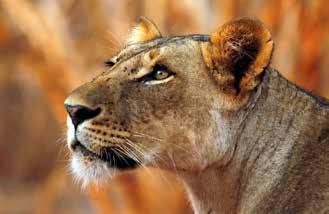


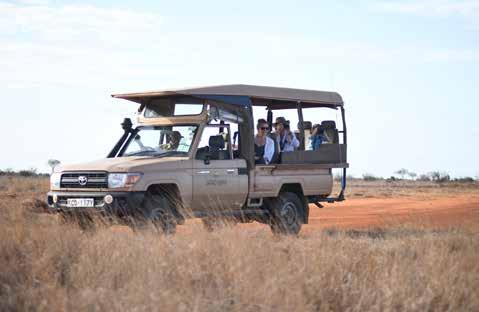




Rediscover safari’s romance at Satao Campcanvas comfor ts, star-f illed nights, and daily elephant parades at our waterhole.



How close did Kenya come to having its white settlers declaring their independence from Britain?
A small party takes the incompleted Uganda Railway to hunt for game near Makindu in 1899.
A teenage Scot jumps ship in Mombasa in 1907 and starts a new life in

A young family takes their home leave from Kenya in 1945 by rail, inland lakes and Nile steamer.
After the elections of 1974, popular MP JM Kariuki becomes more outspoken against President Kenyatta’s government, and his life is
The author traces her grandfather’s role in a Masonic Lodge in Nairobi, trying to understand the allure of this secretive organization.

Cover photo: In the early days of the railway in Kenya VIP guests were often given a cushioned seat on the front of the engine. We are uncertain the names of the riders in this photo. The one on the left seems to be a hunter because of the bullets on his shirt. The photo is from Sue Deverell’s collection. Her grandfather, Alfred Gerald Wright Anderson, and his business partner, Rudolf Meyer, bought the Standard Newspaper from AM Jeevanjee in August 1905 and renamed the newspaper the East African Standard. They took many photos to chronicle that era of Kenya’s history, including this photo.
This issue of Old Africa marks our first magazine where we will not be printing our magazines on paper. It’s a big change for all of us. We do hope that all our subscribers have given their emails to us so we can send an email notice that the magazine is out and to allow them to download a PDF copy. It’s also possible to read the magazine by going to our website (oldafricamagazine.com), but to be able to read it more easily and to increase the size of the font on your computer or tablet, it’s best to read the PDF copy. And, for those who really want a printed out version, it’s always possible to print off the PDF on your home computer printer or at a nearby photocopy centre.
Our letters pages are filled with messages of support from our readers about my recent surgery for cancer. I appreciate everyone’s thoughts and prayers. God is answering. My wife Kym and I came back to Kenya on August 1st for a time of rest and healing before a second round of treatment in mid-September. I have enjoyed the Naivasha sunshine! I continue to heal and I edited this magazine here in Naivasha. But by the time you read this I’ll be back in London for some radioactive iodine treatment to clear out any thyroid cancer cells that might still be lurking, and, hopefully, to have a plastic voice prosthesis placed in my neck, which will allow me to regain my voice.

by tablet!
Not having a voice can be frustrating. Especially when I pull out a small tablet to communicate to someone and they immediately assume that if I can’t speak, I also can’t hear. So they begin to mime and use gestures and whisper, or turn and talk to my wife instead of me. I write on my tablet, “Speak! I can hear. I just can’t talk!” But even that doesn’t always work. What else can I do but shrug and laugh. Thankfully, I can still have a voice through writing and editing and that allows you to read this issue number 121 of Old Africa – even if only in a digital format. God is faithful.
-Shel Arensen, Editor
P.O. Box 2338 Naivasha, Kenya 20117
www.oldafricamagazine.com
Editor: Shel Arensen 0736-896294 or 0717-636659
Design and Layout: Mike Adkins, Blake Arensen
Proofreader: Janet Adkins
Printers: English Press, Enterprise Road, Nairobi, Kenya
Old Africa magazine is published bimonthly. It publishes stories and photos from East Africa’s past. Subscriptions: Subscriptions are available. In Kenya the cost is Ksh. 3000/- for a one-year subscription (six issues) mailed to your postal address. You can pay by cheque or postal money order made out in favour of: Kifaru Educational and Editorial. Send your subscription order and payment to: Old Africa, Box 2338 Naivasha 20117 Kenya. For outside of Kenya subscriptions see our advert in this magazine. Advertising: To advertise in Old Africa, contact the editor at editorial@oldafricamagazine.com for a rate sheet or visit the website: www.oldafricamagazine.com
Contributions: Old Africa magazine welcomes articles on East Africa’s past. See our writer’s guidelines on the web at: www.oldafricamagazine.com or write to: Old Africa magazine, Box 2338, Naivasha 20117 Email

Address: editorial@oldafricamagazine.com. After reading our guidelines and editing your work, send it to us for review either by post or email. (To ensure return of your manuscript, send it with a self-addressed envelope and stamps to cover return postage)
Copyright © 2025 by Kifaru Educational and Editorial All rights reserved. No part of this publication may be reproduced or distributed in any form or by any means, or stored in a database or retrieval system, without prior written permission of the publisher.



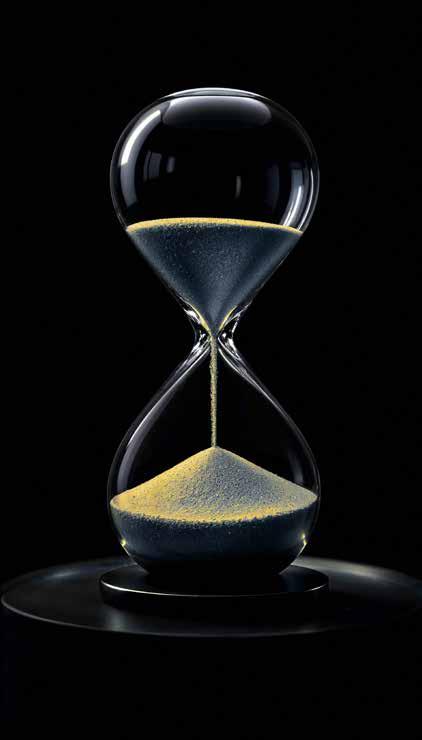

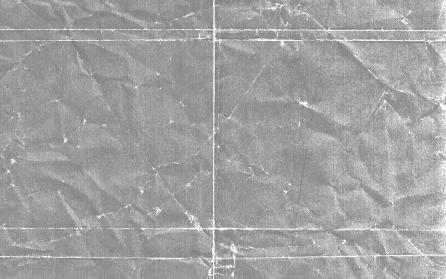





Experience an Authentic Safari this Holiday Season at Porini Camps, set in exclusive wildlife locations. Non-residents traveling with residents can enjoy special resident rates for an unforgettable safari adventure.
Porini Giraffe Camp
Porini Amboseli, Porini Mara, Porini Cheetah & Porini Lion Camp
Porini Rhino Camp
Rhino River Camp (Forest Tent)
Rhino River Camp (River Tent)
Rhino River Camp (River Tent)
Porini Ol Kinyei Safari Cottages

Kes 19,500
4,000
Nairobi Tented Camp [Bed and Breakfast Rates] Kes 11,800 CAMP
Kes 26,950
Kes 21,450 Kes 26,950

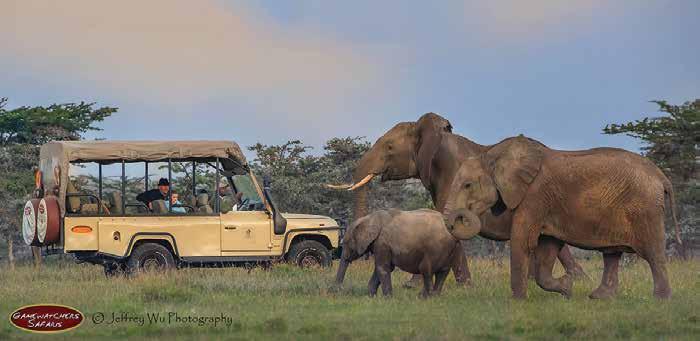
Kes 18,260 Kes 19,500 Kes 23,760 Kes 26,950 Kes 37,500
Rhino River Camp (Forest Tent) Ground Package
Ground Package
*Enjoy 3 nights for the price of 2 at Porini Rhino Camp, Porini Ol Kinyei Safari Cottages, and Rhino River Camp – your 3rd night is free, with only the conservancy fee payable for that night! Only on new bookings - From NOW until 15th November
Full board accommodation I Free drinks such as mineral water, soft drinks, house wines, beer, and Gin and Tonic. I Guests will enjoy sundowners from scenic viewpoints and guided nature walks I The package also features shared day and night game drives in open 4×4 vehicles with an experienced driver-guide and spotter. I At Porini Rhino Camp, guests will have the opportunity to visit the chimpanzee sanctuary in the Ol Pejeta Conservancy I Those at Porini Amboseli Camp can experience a Maasai village visit I For guests flying in, local airstrip transfers to the camps are included.
Please note, the above rates are excluding park and conservancy fees.




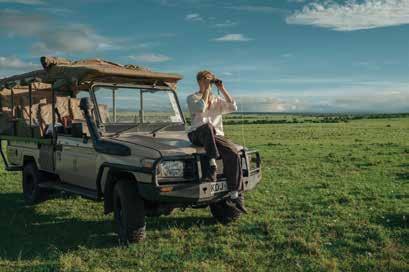







W J Dawson and Fergus Dawson worked with one of the Buxtons growing wheat at Kipipiri in the 1950s. This photo shows wheat combine harvesters in the fields with Kipipiri mountain on the horizon. (Photo by Catherine Dawson)
Members of the Dawson family and guests on the lawn in front of Kipipiri House with the cypress trees and hedges. (Photo by Catherine Dawson)


So sorry to hear of your long battle with health issues. I do hope you get your voice
I want to thank you for your support over many years. You published four or five of my stories over the years. Keep going, in any way you can. We ARE the past and our lives and memories are Important.
Rhodia Mann, Nairobi
Pole Bwana. You have been through quite a journey. But I believe that Our Lord is with us always, and even though we go through times of fear and depression and hopelessness, He will hold our hands to the end. My prayers will be with you and are back in Kenya now. You and your

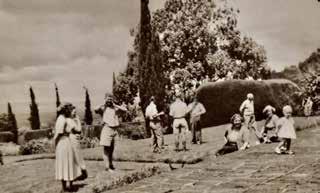


team at Old Africa have brought back many happy memories. My family and I were in Kenya earlier this year, where our two-year-old grandson jumped across the Equator, patted the backside of a rhino and chased ghost crabs along Watamu beach. We had a good time.
I have Amyloidosis so I am restricted to low altitude, so my desire of seeing my final days out in Nanyuki at the Cottage Hospital have been shelved. Both my folks died out there and it has been my wish to do likewise - ah well… Rory Moss, UK
Dear Editor,
Thank you for the last paper edition of Old Africa, which just popped into our mail box here in the Pacific Northwest, with your note telling of your health challenge.
Both David and I wish you a complete return to health in your beloved Kenya and want to extend thanks for all the work you have done at the magazine, sharing Old Africa stories around the world and giving so much pleasure to so many people.
I look forward to working with you on the digital edition. What a legacy you have created.
Isabel Nanton and David Partridge
Dear Editor,
When a large white envelope with Kenya stamps and Old Africa stamped on it comes through the letterbox (particularly in winter), it is a sunny moment in our lives.

Then I read your editorial and the openness about the current ordeal you are undergoing. How you ever managed to even produce this issue at this time is astonishing, and a tribute to your determination. Nothing now matters more than your health and recovery. Your readers are rooting for you, and I too send every good wish and prayers to you and your family.
Mhorag Candy, UK
Dear Editor,
I was very surprised about the very sad information about your health when I received the last printed Old Africa magazine, yesterday. It is very difficult to understand such bad health news. I wish sincerely good health and as much as possible strength to go throughout your treatment.
If you’re back in Kenya, I think your beloved surroundings in Naivasha are also helping you recover.
I am looking forward getting the digital magazine in November. Old Africa is a great magazine and will be great to read and watch these wonderful memories on my computer. Of course, I always waited patiently for the mail from Kenya with Old Africa and Kenya stamps on the letter! Thank you for all the magazines which I got from Kenya. Upone haraka. God bless you.
Heini Hirni, Switzerland
Dear Editor,

I was most distressed to read of your news in the latest edition of your great magazine. You have had a horribly long time ‘inside.’ Hang in there, and every best
wish for a more comfortable time ahead.
I fully understand the need for changes with Old Africa. When Esso curtailed operations in Africa, I formed a club of Esso alumni with African experience, and we got up to 150 members at one time. We only had an annual newsletter and an annual lunch in London. But numbers fell away for age reasons, and after 25 years we folded in 2019. But it gave some people some pleasure,
You and your team have given pleasure to so many people. To us oldies (I am 95 next week, d.v.!) these memories you revive and expand are very valuable. Thank you. I think my children will keep up an interest in whatever you produce, (they were born in Tanganyika and Kenya) but not, I fear, the grandchildren.
I would like to send a small contribution to help with Old Africa expenses, if that would not be presumptuous?
John Lindgren, UK

Dear Editor,
I admire your courage in coming out so openly with your medical condition while at the same time thanking God for answering the prayers of your many friends.
I have vivid memories of how your magazine first started in 2005 and the tremendous popularity it has gained over the years with you at the helm. This is no mean feat and I feel I speak for all your wide readership when I say you deserve our praise and congratulations.
That you wrote the editorial from your sick bed at the Royal Marsden hospital in
London is highly commendable and goes to show the stuff you are made of.
In wishing you a speedy recovery I assure you of my humble prayers and good wishes. Meanwhile, keep up your infectious spirit and many thanks for bringing back so many near- forgotten memories of our days in Kenya - the land I still love.
Since I have only recently renewed my yearly subscription, can you please accept the unexpired portion as my donation for this term. I shall continue to donate in the future considering how much pleasure Old Africa has given and continues to give me.
Mervyn Maciel, Manyatta, Sutton, Surrey
Dear Editor,
I just received your note with the latest printed Old Africa magazine. I am so sad to learn of your illness and pray that you will heal quickly and be back to your self soon. I will of course sign up for the digital version, but I have loved receiving and saving so many wonderful volumes. With heartfelt best wishes.
Patricia King/Annamaria Alfieri, New York City, USA
Dear Editor,
I am returning to our correspondence of 2019. I am pleased to inform you that - at long last - the history of Egerton University has been written. My colleague and I completed the manuscript at the end of 2023. After thorough review and assessment, it was accepted for publication by East African Educational Publishers, the oldest and most authoritative


publisher in East Africa and one of the best on the continent. The book has now come out of press.
We have gratefully acknowledged your assistance in the book. The inquiry that we made and which you publicised through Old Africa, was most productive.
Having read your Editorial in the latest issue of the Old Africa magazine, I wish to say how moved I was by your courage and your devotion to your work as Editor. No wonder Old Africa is the unique publication that it is and one that has played such a stimulating part in the mental and emotional life of many people associated with the past and present of East Africa. You are an incredible model of largeness of mind and spirit. Thank you.
I wish you a full recovery. Having gone through a similar experience myself, I can say that this is possible. The medical advances made in the treatment of cancer are enormous.
It has been something of a miracle that Old Africa has remained in print all this time. So it is perfectly understandable why it has to go online now. This transition need not affect the quality of the publication, nor its appeal. It is, of course, sad that there are so many Returns to Sender. But, then, how else can it be?!
Emilia

Ilieva, Egerton University
Editor’s Note: Thus Until, a History of Egerton University is reviewed by Old Africa in this issue.
Dear Editor,
I received issue 120 of Old Africa earlier today but it’s just now I have read the very touching editorial. May God restore you to full health and bless all who produce Old Africa so it can remain in circulation for many more years. I fully understand your position on the transition of Old Africa to digital format. It’s just that it’s difficult to keep track of the issues and to store them for future reference. I used to buy Parents and other magazines, but when they turned digital I forgot about them. But I will devise a way of sticking with the digital Old Africa
Reuben Matheka, Egerton University

Dear Editor,
Thanks for a great AugustSeptember magazine. I hope that you are doing better and that your health is improving slowly but surely. We pray and wish you a speedy recovery. Here in Njoro the weather is continuing to be cold with an occasional rainstorm. Place is looking nice and green.
I’ve just got back from Watamu where my family and friends gave me a great birthday party, as I turned 80 years old on 3 August. We stayed at Turtle Bay lodge, which was fabulous. We were over 30 people. Kids, grandkids and friends from far as Sweden, South Africa, Tanzania as well as Kenya. George Vrontamitis, Njoro
Dear Editor,
I am afraid the bush telegraph does not seem to get to our part of the world quickly enough as I have only just found out about your fight with this bloody
dreadful thing called cancer. I only knew about this when I collected the Old Africa magazine an hour ago and read your editorial. I was completely taken aback.
Caroline and I would like to wish you the very best and hope the operation has been a success. It must be truly upsetting for you and your family but with your faith in God, I hope your recovery will be quick and complete. You are being treated in a world class institution who I am sure are doing everything possible to get you back to so-called normalcy. Please take care of yourself and our thoughts and prayers are with your family and friends and especially yourself. Stay positive and take care. Andrew and Caroline Mules, Naivasha
Dear Editor,
Thank you for your note that came with issue 120. Fight on to be rid of the terrible cancer. We hope that goes well. You are in our thoughts and prayers.
120 issues is a fantastic achievement. You and the team have brought immense joy and pleasure to many readers, both in East Africa and across the world. You have made a written record of many historical events and stories that occurred over about a hundred years of East African history. A record to be proud of, and I suspect a record that many people in other countries on the continent wish they had too. I’ve sent you my email and I look forward to hearing from you about how to receive the digital magazine going forward. Thank you.
Hugh Back, Norwich, UK
Dear Editor,
Very tough news about your cancer diagnosis. All we can do from here is send every good wish and hope that the amazing advances in medicine over the last few years will work for you in every regard.
We have certainly enjoyed the Old Africa issues we have had, and only regret that we didn’t know about the magazine sooner.
There is one tiny story about it that might amuse you. I went to a new barber a few years ago and discovered that there were no magazines to browse as I sat and waited my turn. When I got to the chair I asked Howie, my barber, about that. His response? “Oh, my magazine guy died.” I offered to bring some and he said, “Great, I’ll cut your hair for free.”
Old Africa was a one of the set of half a dozen titles I took each time. A few visits later he told me had some new customers at the barber shop after one expressed his delight at seeing your Old Africa magazine. This man, from Kenya, had told his friends about it and two new men had come along to the barber shop just because of the opportunity to read the stories in Old Africa !
I’m sure you have my email on file for the new transmission system. It’s sad to realize that our love of hard copy, something to hold, is taking yet another hit. In this case it’s understandable, but nonetheless sad.

Dr Jerry Haigh, Saskatoon, Saskatchewan, Canada
Dear Editor,
How I love the printed copies of Old Africa magazine! I belong to the old school.
Pole sana, Shel, kwa ugonjwa. I wish you quick recovery and great health to allow you serve us for many years to come. Here’s my email. Share the access details to the Old Africa online version.
Tanui Paul, Nairobi

Dear Editor,
I have been so saddened by your news and sincerely hope that your surgery and subsequent treatment proves successful. Like most of your subscribers of my age group, I’m sure, I am disappointed that your wonderful magazine will now be digital but completely understand the need to go that route. As you must know, and have been told countless times, your publication has brought enormous pleasure and interest not only to those of us here in Kenya but also many others around the world. That said, good luck with your new digital version during the next year and if it becomes too demanding an exercise we must just simply say, “Thanks for the interest and memories we have all enjoyed up until now.”
Incidentally, there are many of us doing charitable work across Kenya – especially in education - who are struggling to keep going as the costs have skyrocketed, fundraising is becoming beyond us and we, too, are getting older. Sadly, as well we all know, in spite of what the Powers That Be say, it continues to be a case of the rich getting richer and the poor poorer, but we
have all done our best in our own small ways.
Pop Gunson, Karen, Kenya
Dear Editor, Thank you for yet another wonderful issue of Old Africa. When I saw it in the store the other day, I immediately picked up a copy and finished it in one sitting. I have been reading the magazine regularly for only two years, but I must say this was one of the most beautifully crafted issues so far.
I was saddened to read about your health challenges. I wish you strength, a full recovery, and improved health in the days ahead. It is inspiring that you continue to contribute to Old Africa during such a delicate time. I am 35 years old and have lived in Kenya for the past 8 years, and I would be deeply saddened seeing Old Africa cease publication. I would like to subscribe to the next year immediately - copying Blake here so he can kindly guide me through the process.
I understand you are considering moving to a fully online version, but one of the things I love most about Old Africa is the printed format. Reading it on paper - in the evening, or after a long day at work - offers a completely different and much more enjoyable experience than scrolling on a phone after a day in front of a screen. If you ever reconsider or decide to keep printing at least a limited number of copies, please know I am happy to support Old Africa however I can. I would gladly volunteer my time or contribute in other ways to help make it possible.
Riccardo Zennaro, Nairobi
by Karen Rothmyer
Several years ago, while editing a memoir written by Agnes Shaw, a Kenyan white settler and elected member of the Legislative Council, I interviewed her one-time Sotik neighbor Patrick Walker. Walker was well-acquainted with many farmers throughout the white highlands during the late colonial period because of his work for a property firm in Nairobi.
I asked him whether he thought there had been any serious possibility in the years before Kenya’s independence in 1963 that the white settlers, faced with the prospect of black majority rule, might have declared Kenya’s independence from Britain in much the same way as white Rhodesians did in 1965 with their UDI (Unilateral Declaration of Independence). As is clear in Shaw’s memoir, the Kenyan settlers’ anger at the British government over what they saw as its readiness to renege on earlier promises that Kenya would forever remain a “white man’s country” was at a high pitch at the time.
Walker paused to consider the question, then answered in carefully chosen words. “Amongst the farming community in the white highlands, I suspect there was much more support than anyone ever admitted,” Walker said. “I think given the opportunity they would have done so.”
Godfrey Muriuki, a retired University of Nairobi history professor, confirmed Walker’s sense of the mood among the settlers in a recent email exchange. “I lived in Mweiga among them during my school holidays in the 1950s, which afforded me the chance to interact with them,” he wrote. “I vividly recall that settlers in Kenya were definitely mooting the idea of emulating those [who later declared independence] in Southern Rhodesia.”

In the end, though, the white settlers in Kenya didn’t rebel. A review of memoirs and documents of the time reveals heated rhetoric and widely expressed loathing of Whitehall but no actual steps toward that end. (Of course such actions would have been regarded as traitorous, making it unlikely that anything explicit would have been committed to writing.)
But what is nonetheless revealing—
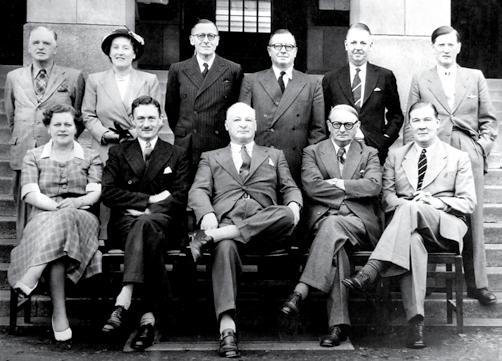
Shaw (second from left in the back row) along with other European elected members of LegCo in April 1952. When tensions were high over Kenya’s upcoming independence, she cautioned her constituents against a white-led rebellion against Great Britain and sided with Michael Blundell (front right in this photo) in steering Kenya to independence as an African-led country. (Photo from Kenya Kaleidoscope)
shocking, really—about such a review is the evidence it provides of the settlers’ repeated threats of rebellion throughout Kenya’s colonial history, and of how much encouragement they received. Edward Grigg, a one-time governor of Kenya and a whole-hearted supporter of the settlers, recalled the American Civil War in a Parliamentary speech in the 1940s in which he warned that if the British government didn’t show more sensitivity to the Kenya settlers’ concerns, “It is not impossible that bad handling of this problem would, in the end, produce the same consequences in Africa.”
What would have happened if Kenya’s white settlers had declared their own version of Rhodesia’s Universal Declaration of Independence—the decision to break all ties with Britain—is hard to say. It’s unlikely that the whites would have met with implacable opposition from London, backed by military force, as was the case in the American colonies in 1776. Instead, they might they have discovered, as the whites in Rhodesia (now Zimbabwe) did during 14 years of white rule following UDI, that the British government did not want to embark on an expensive undertaking that would be made even more

unpalatable by the need to send white troops to fight white settlers. Meanwhile, Africans in Kenya would undoubtedly have fought for a black-led version of independence, as they did in Rhodesia.
One thing is certain: if Kenya’s whites had officially broken ties with London, Kenya’s history would be even more bloody than it already is.
Throughout most of the colonial period, both the white settlers in Kenya and the home government in London assumed that the colony would eventually become selfgoverning—with whites in charge. According to Elspeth Huxley, who wrote extensively about her Kenyan childhood as well as the country’s politics, “the idea behind white settlement was to found a British colony on the South African or Australian model, which would grow until it became large and strong enough to win selfgovernment, as the Dominions have done.”
‘Dominion’ referred to complete or nearly complete internal self-government but with the English monarch still the head of state. Australia and New Zealand achieved Dominion status early in the 20th Century, made relatively easy by the fact that the vast majority of their original non-white inhabitants had been wiped out by disease. South Africa, where whites were a minority, but a substantial one at over 20 percent, achieved the same status shortly thereafter.
More analogous to Kenya was Rhodesia, which became self-governing to a significant degree in 1923. This occurred despite the fact that there were at the time only about 40,000 whites compared with roughly one million Africans. As cited by British academic Margery Perham in Race and Politics in Kenya, white proponents of self-government in Kenya used this fact to argue that there was no reason that Kenya, whose white population never got higher than about 62,000, could not do the same.

The proponents of a Dominion in Kenya also offered one promising proposal to those concerned about the small number of whites: to link up with the white settlers to the south. In 1942 Lord Francis Scott, a member of Kenya’s Legislative Council, said that “there is only one right and proper future for these territories in East Africa and that is that we should all be
joined from the Limpopo [which rises in South Africa] to the Nile in one British East Central African Dominion.”
Scott’s vision never came to fruition (although for a decade, starting in 1953, there was a federation of what are now Zambia, Zimbabwe and Malawi), but for years it retained considerable white appeal. It was, after all, to Rhodesia and South Africa that Kenya’s whites looked for models and encouragement. Many of Kenya’s early settlers came from South Africa, while Governor Grigg grew up there and Governor Robert Coryndon, his predecessor, was born there. White Kenyans took many of their cultural cues from South Africa, enforcing a colour bar that prevented Africans from entering many establishments or even being present in downtown Nairobi without a pass. The American writer John Gunther, who visited Kenya in the mid-1950s, noted in Out of Africa that “die-hards talk on occasion of ‘secession’ from the Commonwealth. They will make a Boston Tea Party, throw off the ‘yoke’ of London, and fight a white settlers revolt as George Washington did. Then will come the establishment of a straightout white supremacy

In 1942 Lord Francis Scott, who had a farm in Rongai and was a member of LegCo, pushed for a white-led British East Central African Dominion that would have stretched from “the Limpopo [which rises in South Africa] to the Nile [which has its headwaters in Uganda]. (This cartoon by Colonel CM Truman first appeared in the Tatler on 12 July 1939. It was later republished in Old Africa issue 68 (December 2016-January 2017

state, with no nonsense about it, like that in the Union of South Africa.”
The first white threat of rebellion in Kenya occurred in 1923. This was after the Devonshire Declaration was adopted, reaffirming the restriction of land grants in the white highlands to Europeans, which the settlers applauded, but also putting forward a proposal to establish a common voters’ roll for European and Indian voters, which they did not. As Grigg describes it in his memoir, “The settler community responded with a highly unorthodox threat to capture the Governor [Coryndon] and hold him prisoner till the Order was withdrawn.” He notes that the governor “had no organized force behind him other than a battalion of King’s African Rifles with English officers,” whose willingness to attack their fellow Englishmen was open to question. C S Nicholls writes in Red Strangers that Coryndon received information that the settlers had plans to take over the railway and the radio station in Mombasa, and they had enough skilled people in their ranks to run the colony’s institutions.
“Downing Street capitulated,” Grigg writes. Or, as the late Ronald Robinson, professor of Global and Imperial History at Oxford, put it in an essay, “The colonists were pointing the pistol of rebellion at the Colonial office, not for the first or last time.”


political power to Africans, CB, a top leader of the diehards who wanted whites to continue to lead Kenya, resigned his post as Speaker.
After a report in the late 1920s advocated more rights for Africans, “Once again there were serious risks of risings and secession to South Africa,” according to Robinson. He referred in a 1988 lecture to a half-dozen incidents in which the British Cabinet decided “to avoid the risk of a settler revolt at all cost” by giving in to settler demands.
In 1935 The Round Table journal, an offshoot of a movement to promote closer union between the United Kingdom and its colonies, asked a leading white settler from Kenya to give the white community’s views. Throughout the unsigned article, the tone is hostile to London’s rule. Noting that the settlers have recently formed a “Colonists’ Vigilance Committee,” the author warns that “There will be no peace in Kenya” unless the settlers are given more power, and without significant changes “it is almost certain that some major incident will occur in Kenya before long.”
Throughout the rest of the 1930s and most of the 1940s, however, first the Depression and then the Second World War produced a period during which London made no serious challenges to increasing settler power and the settlers didn’t push as hard as they had earlier on the issue of self-government. This did not this mean, however, that the settlers were softening their opposition to rising African demands. “By 1942 it was still too hazardous to override the Europeans for the sake of advancing native interests,” Prof Robinson said in a 1988 speech. Moreover, according to Robinson, by the time the war was over, England was “heavily in debt to, and dependent on, the colonies,” giving the settlers yet more leverage. “Far from the imperial dog wagging its white colonial tail, the white colonial tail was wagging the imperial dog. Such were the historical odds in favour of the colonists taking Kenya and the Rhodesias to independence under white minority rule, as calculated in a Colonial Office policy study in 1948.”
This same warning was included in a memorandum prepared for the British cabinet in 1951 by Patrick Gordon Walker, the British Foreign Secretary. As recounted in The Lion and the Springbok, Gordon Walker stated in the memo that “in the last resort the British government had no real power to control” the settler communities in Kenya and the Rhodesias, adding that “Certainly Britain’s power on the spot would be found inferior to

South Africa’s.” The authors also quote Gordon Walker as saying that if Britain allowed the impression to be given that it was committed to a policy of subordinating whites to Africans, “Rather than face that, the whites will in the end revolt.”
That this was no idle threat is indicated by Michael Blundell, one of the top white settler leaders in Kenya at the time. In his memoir So Rough a Wind, he writes that the Europeans made it clear to Whitehall that if any sweeping political charges were imposed against their wishes, these “would be resisted, even to the extent of unconstitutional action. What this action would have been, we had not worked out; but I remember telling a meeting at Naivasha that we were very determined on the issue, and, if necessary, would rebel.”
There things stood in 1952, when African freedom fighters burst upon the scene in Kenya, murdering several Europeans as well as Africans who supported the colonial regime. This led a few months later, in January of 1953, to a march of up to 2,000 white people to Government House (now State House), demanding stronger security measures. As recalled by Blundell, the whites were so angry at not being given access to the governor that they stubbed out the ends of their lighted cigarettes on the bare arms of the African askaris trying to guard the doors. “I saw in front of me a little woman dressed in brown who was, in normal times, the respected owner of an excellent shop in Nairobi,” Blundell recalled. “She was beside herself with fury and crying out in a series of unprintable words, ‘There, there, they’ve given the House over to the f….niggers, the bloody bastards.’ Unknown to me, the Sultana of Zanzibar, who was staying at Government House, had incautiously come out on to the balcony above the doors to see what was happening.”
By the following year, some of the most extreme right-wing settlers had organized the White Highlands Party, one of whose leaders was a Nairobi businessman called L E Vigar. According to D H Rawcliffe (whose book The Struggle for Kenya, published in 1954, was banned in Kenya) Vigar had openly declared that his supporters “would seize political control of the country by force of arms if the British government persisted in its aims of furthering African and Asian political

development. He stated that in the last resort he would be prepared to invite [South African Prime Minister D F] Malan to send South African troops to Kenya and hinted that Malan had already made an offer in this direction.”
The next few years saw Kenya’s white population heavily involved in the struggle against the black freedom fighters who came to be known as the Mau Mau. And when it was over (effectively, by the end of 1956), little if anything in their thinking had changed. British journalist and historian Basil Davidson wrote in Africa South magazine in 1957 that the objectives of the Europeans in Kenya remained “to shift responsibility for Kenya from Whitehall to Nairobi” and “to build into any conceivable future constitution a cast-iron guarantee that they, the Europeans, shall remain the real government of the country.”


One thing that had changed was that white Kenyans had become a battle-tested military force. Virtually every able-bodied white man in the colony became part of the army or police during the Emergency, with about 1,800 men serving in the Kenya Regiment and many more in the police and police reserves. It might be supposed that such fighters would be no match for trained British troops, but it’s worth recalling that American colonial forces were far from equal to the British Redcoats during the American Revolution either, and yet in the end they and their cause prevailed.
Another change, however, this one not in the settlers’ favor, was that the Emergency had taken a huge financial toll on the colony. Whereas the Kenyan economy had been strong coming out of WWII, historian Gerald Horne notes in Mau Mau in Harlem? that the colony had to borrow
Elspeth Huxley in 1935.
(Photo from https://www. europeansineastafrica. co.uk)

14 million pounds in one year alone from the British exchequer. Rawliffe claims in his book that “If the Mau Mau rebellion had been brought to an end within the first nine months of the emergency, it is certain that the settlers would have gone all out to obtain self-government at the earliest practical moment in order to break the restraining link with Whitehall. But Mau Mau resistance continued, necessitating further military aid from Britain and greatly increasing the colony’s financial dependence on the home country. As a result, the clamour for immediate self-government has considerably abated.”
Perhaps the most important thing lacking among the white settlers in Kenya was effective pro-independence leadership of the sort that Ian Smith provided in Rhodesia. Smith may have been stubborn and humourless, as well as a racist who said he didn’t believe in black majority rule “not in a thousand years,” but he skillfully managed Rhodesia’s economy and effectively promoted the Rhodesian cause—for example attracting fawning groups of several hundred Americans to 1978 events in New York and Los Angeles.
In Kenya, the ‘diehards’ were definitely vocal. E L Howard-Williams, a legislator and settler leader, issued a public call for a “show down” between “Kenya’s European settlers and the colonial dictatorship which rules us” in a column in the weekly Comment (cited in a 2007 unpublished master’s thesis by Pius M Nyamora), a publication described by Rawcliffe as “almost fascist in its outlook.”

But their abilities didn’t match those of Blundell, an astute farmer-turned-politician. Blundell, seeing the ways in which political opinion in Britain were changing, shifted from saying in 1957, as quoted by Davidson, that
“we are opposed to any scheme…which might go so far as to deprive Europeans of leadership and control of the Colony as a whole” to acquiescing in 1960 to major Constitutional changes demanded by British officials at a conference in London that began transferring political power to Africans.
Agnes Shaw, a Blundell supporter, recalls in her memoir that upon the Blundell group’s return to Kenya from that conference, the diehards made their feelings clear. “Poor Michael!” Shaw writes. “To the accompaniment of cries of ‘Traitor!’, thirty pieces of silver were thrown at his feet as he walked towards the airport building.” A few days later, Sir Ferdinand Cavendish-Bentinck, a top leader of the diehards, resigned his post as Speaker, which Shaw says “was hailed by the great majority of European settlers as a noble and selfless action…Like drowning men, the shocked and badly frightened settlers clung to ‘C.B.’”
But Shaw writes that she told her constituents that at that point, “to talk of armed resistance was crazy. What a handful of early settlers had done in the 1920s was not possible today.” And reluctantly, many agreed, spurred in many cases, according to Prof Muriuki, by practical concerns. “Above all, quite a number of them were well connected to the British aristocracy. A UDI would have endangered their investments,” he writes. “This would have led to serious internal divisions that might have led to an immediate scuttling of such a venture.” Those whites who could not abide the idea of being ruled by blacks began to leave the country, and those who stayed learned to accommodate to the new realities.
If Kenya had declared UDI in the late 1950s or early 1960s, facing the same conditions as Rhodesia later did, there are reasons to think it could have survived for at least some period of time. Rhodesia, after all, managed to thrive economically for 14 years despite an economic embargo, and it was a landlocked country. British military force would almost definitely not have been used: Robinson noted in his 1988 speech that Arthur Dawe of the Colonial Office had declared a decade before that it was “unthinkable” that any British government “would bring military force to bear upon a community of our own blood.” South Africa would have done what it could to assist, if Vigar


Cavendish-Bentinck (left), Tom Delamere and David Bowden meet to discuss Jockey Club business in Nairobi in independent Kenya in the mid-1960s. Tom Delamere was one of the first from the white settler community to take up Kenyan citizenship after independence. Despite CB’s earlier opposition to African-rule, he remained in Kenya until his death at the age of 92 in Nairobi. He was buried in Dorset, England. (Photo from And They’re Off!
100 Years of Racing in Kenya)
is to be believed, while America would most likely have sat on the sidelines, its fears about Communism trumping any sympathy for rising black nationalism. And white supremacists from around the world might well have flocked in as volunteers, as hundreds did in Rhodesia. But in the end, it seems clear, Kenya would
not have been able to sustain itself for long as a white-run state. The tide of history was running the other way, and black Africans were on the move throughout the continent to wrest back control of their countries. Black freedom fighters in Kenya, even if temporarily subdued, would have risen again and provided more martyrs to the cause that had already claimed thousands of lives.
Nonetheless, the allure of a white ‘promised land’ in darkest Africa still lingered. Agnes Shaw talks late in her memoir, which ends in 1964, about her regret at the passing of a “way of life of a bygone age.” In Kenya, she writes, “we had been fortunate in that we had been able to preserve this delightful way of life longer than in most places in the modern world.” Delightful, indeed, for white people, but preserved at great cost to the country’s black inhabitants, and apparently not delightful enough to risk dying for.
Karen Rothmyer lived for many years in Kenya, first in the 1960s and later in the 2000s. She is the author of Murumbi: A Legacy of Integrity and was the country’s first public editor, at The Star newspaper.











by Judith Chapman and Chris Durrant
Our grandmother, Dorothy Wynn, then just 20 years old, set sail with her brother William Charles Wynn, 4th Baron of Newborough, in his Steam Yacht Fedora from Portsmouth in southern England in November 1897. They sailed for the Far East, going down the Suez Canal and the Red Sea and then across the ocean to Burma where the siblings spent some months with their elder sister Mabel, married to an officer in the Burma Police. In January 1899 Fedora left Singapore on her journey home, sailing directly west to the coast of East Africa before going south to round the Cape of Good Hope. Both Dorothy and a young member of the ship’s 25-man crew, Henry Barnard, the son of Fedora’s Captain, Turner Barnard, about the same age as she was, kept journals of this part of the voyage. We used both journals to extract a very personal record of the journey.



In March 1899 they docked in Mombasa, from where the railway to Uganda was under construction. The Fedora spent just over a month there, while the Wynns, Willie’s valet and the yacht’s doctor travelled about 250 miles up the railway, camping in the bush and hunting a variety of wild animals. This is a summary of this part of their adventure.
Work had begun in 1896 on the Uganda Railway, a slightly misleading title, since it did not take travellers to modern Uganda, but only to Port Florence (soon known by its original name of Kisumu) on Lake Victoria in Kenya.
Progress on the railway was quite well advanced by the time Fedora sailed into Mombasa harbour on 9 March 1899 and at that time was not far short of Nairobi, reached in May 1899. Despite the swampy nature of the land there, the railway authorities decided that it would be a
suitable place for the main administration office, given its temperate climate and reliable source of water from the Nairobi River running through the swamp.
The construction of the railway, through wild and inhospitable country, threw up huge challenges. Perhaps the major one was labour. Over 36,000 men were recruited, mostly from that part of British India which is now Pakistan. Most of these were repatriated to their homeland at the end of their contract, but a significant minority elected to remain in East Africa and sent for their families to join them.
Not all the imported workforce either made it back to India or settled in the Protectorate. The casualty rate was extremely high –deaths of the order of about six for each mile of line laid down – the main causes being sickness and accidents. There was, however, one

cause of death among those working on the railway that, although it accounted for only a tiny proportion of the whole toll, got a great deal of unwanted publicity at the time and undoubtedly spread great terror among the workers – man-eating lions! The most notorious of these were brought to a wider public by Lt-Col J H Patterson in his 1907 book The Maneaters of Tsavo. Patterson was a distinguished soldier and an engineer who arrived in the Protectorate almost exactly a year before Fedora did. He had been appointed by the Foreign Office to the staff of the Uganda Railway to use his engineering skills to help solve the considerable practical problems of laying the line. The first of these for him was the construction of a substantial bridge over the Tsavo River which Patterson describes as “a swiftlyflowing stream, always cool and always running…(with a) fringe of lofty green trees along its banks.” When he got there, the railhead had just reached the riverbank and thousands of workmen were already encamped there. He had not been there long (March 1898) before reports came in of workers taken from their tents at night by maneating lions. A reign of terror began which lasted for several months and at one stage held up work altogether for three weeks. The lions responsible, two maneless males, were cunning and determined and initially evaded all efforts to shoot or trap them. In the end Patterson himself brought them both down at considerable personal risk which included spending
several hours one night on a very flimsy platform while one of the man-eaters prowled and growled beneath him. The lions may only have actually killed about 30 people, but the terror and inconvenience caused were out of all proportion to that.
They were not, of course, the only man-eating lions around – the day after her arrival in Mombasa, Dorothy recorded: “Man-eating tiger killed within three miles by poisoned arrow by a native,” (her zoological knowledge at that stage was evidently patchy) while the next day Henry noted: “There have been two men killed close here this last week by lions, one European and one native. They say there are plenty of lions a few miles inland.”
The following day Dorothy writes: “Mr O’Hara killed by a lion. His remains brought down today.” The hapless Mr O’Hara was a road engineer who was snatched by a lion from his tent beside his sleeping wife and taken to be eaten in the adjacent bush.
The fact that Fedora’s passengers were prepared

to venture into the wilds of the East African bush in spite of these hazards says something for their courage and enterprise, although the day she recorded the killing nearby of the ‘man-eating tiger’ Dorothy did say that she had spent the whole day on board, despite it being “very hot. No breeze.” Dorothy actually records having heard lions while they were at Simba. “Heard lion roaring close by while at dinner.” In conversation many years later, her daughter Alice told one of the authors of an actual encounter Dorothy had with a lion. “Well, all she ever said was ‘oh, I was out sketching,’ I think, and I took it that they were sitting under a tree in the shade and so was the lion. She told me ‘it was very lucky he wasn’t hungry.’ So, I imagine they were sharing a bit of shade with a lion which they hadn’t realised was there. Well, they probably wouldn’t have seen it lying in the long grass.”
Patterson, in his book, also relates the tale of another man-eater who set himself up near the small station of Kima, some 50 miles short

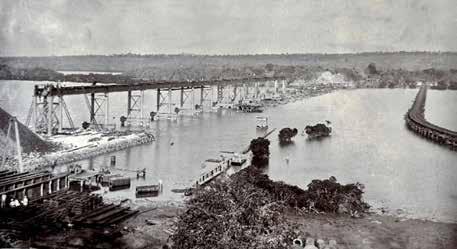
of Nairobi, in mid-1900. As we shall see, the Fedora party had passed through Kima the previous year on their way up the railway from Makindu to Kiu. A Police Superintendent, Mr Ryall, passing through the station with two visiting European friends, decided to set a trap for the lion in the carriage in which he was travelling. The three men took it in turns to keep watch but, when the last man, Ryall, concluded that the man-eater was not going to put in an appearance and turned into his bunk, the animal, which had obviously been waiting for this, broke into the carriage and carried off Ryall. The other two men, miraculously, got away unharmed, physically at least. One, sleeping in the upper bunk, had to scramble over the lion to get to the door through which he could escape. The other, sleeping on the floor (there were only two bunks in the compartment), had the lion standing on him while it sank its fangs into poor Ryall, lying in the lower bunk, and had to remain there in terrified silence until the lion departed from the carriage through the window with his friend


in its jaws. Not long after, the killer was caught in a trap made by railway staff. Patterson writes: “He was kept on view for several days and then shot.” That railway carriage remained on display at the Nairobi Railway Station some 60 years later. When we (Chris and Judith) as children caught the overnight train to the coast for our annual holiday, great excitement, anxiety and storytelling arose from viewing it.
The Fedora had arrived at Mombasa in early March 1899 and moored, Henry tells us in his journal, “in 18 fathoms of water with two anchors and 30 fathoms of
chain on each.” This was in the traditional harbour on the eastern side of the island, by the old town and under the battlements of Fort Jesus, built by the Portuguese over 300 years before. This magnificent structure, described as a masterpiece of late Renaissance military fortification, was designed at the order of the Portuguese King Felipe by the Italian architect Giovanni Cairati and exists to this day.
Dorothy’s description was hardly effusive: “Quaint ruined looking place perched on a rock. Pretty harbour.”
At the time of Fedora’s visit, Fort Jesus was being used by the British authorities as a prison, which would explain why Dorothy did not visit the Fort during her time in Mombasa. Fedora initially dropped anchor in the old port, where dhows and other sailing ships using the port would have tied up, and remained there for most of her time at Mombasa. However, this harbour was quite unsuitable for unloading the sort of large building materials needed for the construction of the railway, so a new port had
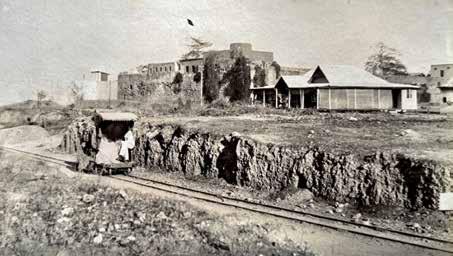
recently been constructed on the other side of the island at Kilindini. There was a natural deep-water harbour there and far fewer buildings, so much easier to access the waterfront.
This was where the railway terminus was constructed, together with a pontoon bridge to take the trains off the island. A much grander bridge, to be named the Salisbury Bridge, after Lord Salisbury, the British Prime Minister at the time, was under construction and was opened four months after Fedora left Mombasa. This bridge was renamed the Macupa Bridge before it was replaced some 30 years later by the Makupa Causeway, now spelled in the proper way. Fedora remained in the old port for most of her stay at Mombasa but moved round to Kilindini a few days before the hunting party returned to facilitate the transfer of a substantial stock of trophies as well as drawing water from the railway’s condensation

plant Henry commented: “Breconshire, merchant steamer, has been laying here for about 3 weeks discharging railway materials for the railway that is being laid by the English Government from Mombasa to Uganda. They have laid nearly 300 miles already.”
Dorothy discovered that
the main means of getting around the island, at least for the upper classes, was the gharri, a small trolley running on two-foot railway lines laid all over the island, pushed by two strapping local men. This arrangement is said to be the first railway constructed in East Africa! At least until the late 1950s, hand-carts,
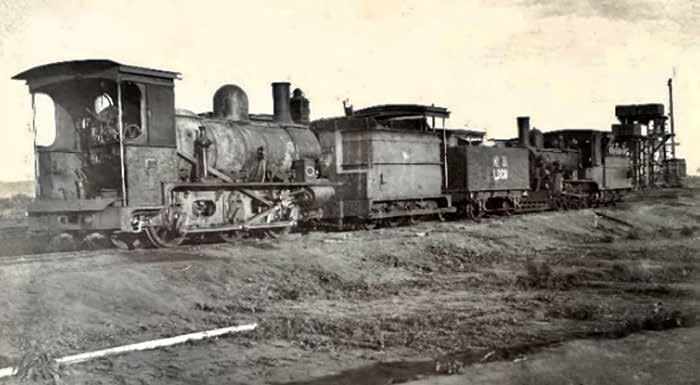



simple trolleys powered by two men standing on the front and back, either side of a couple of passengers sitting in the middle, could often to be seen pumping along the main railway surprisingly quickly. They were propelled by the two men alternately pressing down a hinged shaft connected by gears to the driving wheels. They were a handy means of carrying out inspections on the line and its infrastructure. Being quite light, they could be lifted off the line by their passengers if necessary to let a train through.
The reason for Fedora’s visit to the East African mainland was very clear –hunting! The day of their arrival in Mombasa, Henry, who had to stay on the ship with the rest of the crew, noted: “company going on a shooting expedition for a week or two from this place.” The next five days were evidently spent preparing for this safari, although you would know this only from Henry’s journal. Dorothy speaks merely of the people she had met, notably a Mrs Boustead


whom she described on different occasions as “rather pretty” and “very jolly,” and some walks and excursions around the island, including travelling to Kilindini on the trolley. The men of the party would have been occupied hiring the necessary servants and equipment and presumably finding out exactly where they could go and how they could get there. Fedora and her crew naturally remained at Mombasa, and the nearly four-week safari was the only time in the whole voyage when the crew and the “company,” as Henry invariably called them, were in completely different places. For that period alone, Dorothy’s and Henry’s accounts are not describing the same events.
Early on the morning of 14 March, the Wynns (Dorothy and her brother William whom she refers to as Willie or N in her diary), Dr Jennings, and Mr Robert Morbey, Willie’s batman, took the trolley to Kilindini to board the train. According to Dorothy, they were accompanied by “Headman,
four Somalis & cook” and at the station at Mazeras, a short distance out, they “picked up 60 coolies,” though these were presumably to work on the railway and not in their personal service. They reached the small town of Voi, some 100 miles from the coast, in the early evening. Dorothy notes: “Saw lots of gazelle & two big Antelopes. Very Dusty. Pretty place in the hills.” Here they spent the night, presumably in the train, before continuing their journey early next day.
Between Voi and their next stop, Makindu, some 200 miles from Mombasa, the Wynns had their first view of the snow-covered peak of Kilimanjaro, 60 miles to their west, just within the boundary of German East Africa. On their way to Makindu, they passed through what became, 50 years later, the Tsavo National Park, today one of Kenya’s premier game reserves, and began to see many more animals in the bush. Dorothy’s knowledge of East Africa’s wild inhabitants was evidently improving, although she did record having
seen a mouse deer, which is not a creature found in East Africa. She may well have seen mouse deer in Ceylon or Burma, but on the train from Voi what she probably saw was a tiny antelope called the dik-dik which looks similar to the mouse deer. She was also intrigued by the local humans, quite different to those whom she had encountered on the coast. She recorded that they “wear rows of beads in their ears & Grass rings. Most of them half starved. All close cropped hair.” In fact, people she saw probably were halfstarved as East Africa was in the final stages of a series of natural disasters. An outbreak of rinderpest (a severe cattle disease), a smallpox epidemic, and a plague of locusts had been followed by the complete failure of the rains in 1898 which led to a serious drought. However, Dorothy mentions rain on at least three days during their safari and the record shows that 1899 saw excellent rainfall, with the heaviest as usual in March and April.
Beyond Makindu they passed through the
appropriately named station of Simba (‘simba’ is Kiswahili for ‘lion’) and, as mentioned, the siding at Kima where, a little over a year later, the unfortunate Superintendent Ryall met his end as a lion’s lunch. Finally, on 16 March, they reached Kiu where the adventure was to begin in earnest. Dorothy records: “Country very bare, no trees. Herds of antelopes, Buffalo, Zebra, Ostriches - arr Kiu 1.20 p.m. Pitched camp on hill.” Having arrived in ‘big game’ country, no time was wasted: Dorothy tells us that Willie and Dr Jennings left the next day at 6 am to hunt for game.
For the next three weeks, hardly a day went by without some wild animal being ‘bagged,’ often several species. Dorothy’s part in this was mainly as a spectator and recorder, though she did occasionally go out herself. On 27 March she says she shot two wildebeest. Her diary entry concludes: “enjoyed the day immensely. But rather tired.” Clearly her knowledge of African wild-life advanced by leaps and bounds: from

describing a man-eating lion as a tiger and a dik-dik as a mouse deer early in the journey up the railway, she progressed to being able to identify two species of gazelle (Thomson’s and Grant’s) and even differentiated between two sub-species of hartebeest antelopes (Coke’s and Jackson’s).
She also spent time sketching, on more than one occasion, the snow-clad splendour of Kilimanjaro, and the camps where they stayed at Kiu, Kiboko and Makindu. Only one of these sketches survives. It shows the intense sparseness of the scrubland due to the heat, the dry climate and the red tones of the earth. In the picture, much of the mountain, the highest in Africa at 5,899 metres (19,354 feet), was prolifically snow clad. In recent years, as a result of climate change, the ice fields and glaciers have shrunk and are predicted to disappear altogether between 2025 and 2035.


One of the things that is quite interesting about this episode is the apparent ease with which the various animals were added to the trophy list. As far as we know, neither Willie nor Dr Jennings had any big-game hunting experience. Willie would doubtless have spent many mornings since his youth blasting pheasants, partridges, and snipe out of the Welsh skies, but this is hardly the same thing as setting out into the African bush in pursuit of lions or rhinos.
The party had been joined by George Whitehouse, Chief Engineer or “head of railway” as Dorothy called him, who seems to have been a regular

William ‘Willie’ Wynn shot a lion
visitor throughout their safari, and it is likely he would have given them useful advice. However, it is still remarkable that, on that very first day, according to Dorothy, “Dr J got Thomson’s Gazelle, a lioness & rhinos two horns” and the next day, Willie got two rhinos and Dr Jennings got hartebeests. The two factors in the hunters’ favour would undoubtedly have been the massive proliferation of the game animals, and the fact that they were relatively unaccustomed to being hunted. The plains on which they roamed were not heavily populated by humans, so the most they would have had to put up with was the occasional tribesman with poisoned arrows hunting for the pot. Animals like lions, rhinos, and elephants did not fall into this category, and so would have had very little disagreeable contact with human beings until big game hunting took off in the early years of the 20th century. Dorothy does not mention elephants in her record of the safari, so presumably they did not see any. Not all the animals they did see found their way into the trophy cabinet – buffalo, impala and hyena all escaped, though not


always for want of trying. On 31 March Dorothy records that “N [Willie] went to native boma to wait for hyena by moonlight but didn’t see it.” Why he wanted to shoot a hyena, one can only speculate.
After five days in camp near Kiu, the party moved back down the line to Simba where they camped about half a mile from the station. The Wynns travelled in a railway carriage, but Dr Jennings elected to go by trolley, which gave him the opportunity of bagging another Grant’s gazelle.
They camped near Simba for about ten days. One gets the impression, reading the diaries, that the planning of the hunting expedition was somewhat ‘ad hoc’.They could do that, of course, because they did not need to consider boat departure schedules as they were providing their own transportation. Henry’s diary, a few days before the party left on the train for Kiu, told us: “Company going on a shooting expedition for a week or two from this place.” By the time they got to Simba, however, it was obviously going to be a bit longer than that, with Henry recording that he and the second mate had gone ashore and travelled
to Kilindini by tramway “to send off some ammunition to his Lordship, who wired down from Simba for them. We walked back as there was not a tram leaving at the time.” This was not the last time additional supplies were called for. Just over a week later, Henry writes: “Captain had a telegram from Dr Jennings asking him to send him some more cartridges, so the mate took them on shore to pass the customs and then sent them on to a place called Kiboko.” Leaving Simba on 30 March, they travelled further down the line to the little station at Kiboko (Kiswahili name for hippopotamus but also given to the whip or cane made from hippopotamus hide). Here, says Dorothy, they pitched camp “at 1.30 under the trees…close to swift river. Fished with pin & cotton, plenty of fish. N [Willie] & Dr J went out & got nothing. Lovely sunset & view of Kilimanjaro.”
The following day, which was Good Friday, Dr Jennings walked downstream to catch up with a Mr Ellison who was obviously encamped some way away. As he subsequently informed them, the good doctor narrowly escaped a rhino! He was
not the only person to have had a brush with death: the previous day Dorothy notes: “Coolie charged by rhino.” Presumably he also escaped.
On Easter Saturday she records that they had decided to go on to Makindu on Monday and then from there to Athi River, a reasonably substantial station another 50 miles or so closer to Nairobi. The first part of this plan was put into effect. Joined by Dr Jennings, returning just in time from his rhino-dodging exploits, they travelled the short distance down the line to Makindu where they set up their camp some miles from the station. Her diary for that date records: “Dr J went out at eleven. Shot giraffe & got lost in the dark. Had to send coolies with torches to look for him. N went out at 4 pm & shot lion first shot. Lion was after oryx.”
However, they must have decided that the time had come to end their safari for, after staying near Makindu
for six days, instead of going up the line to Athi River, they turned for the coast and made the two-day journey via Voi back to Mombasa where they arrived on the evening of 10 April. The journey from Voi was not entirely without incident. Dorothy records that “up an incline Engine couldn’t pull train, all our coolies had to get out & push it up, then a coupling broke.”
Overall, it seems to have been a thoroughly successful adventure, certainly in terms of trophies. Henry records: “List of chief animals that his Lordship shot: one Lion, two Rhinoceros, three Zebras, two Ostriches, two Waterbuck, one Coke’s hartebeest, one Jackson’s hartebeest, three Wildebeest, two Grant’s gazelle, three Thomson’s gazelle, one Dik Dik, one Fox besides several deer and small animals. Dr Jennings shot about the same amount.”
This might have been a bit harsh on the good doctor. Looking at the trophy list
recorded by Dorothy, he seems to have exceeded his Lordship both in the numbers and varieties of animals shot. Henry notes: “all the antlers, skins etc are going to be cured and send home by Boustead & Co of Mombasa,” a company presumably associated with Dorothy’s “rather pretty” and “very jolly” friend with whom she caught up again on their return to Mombasa. It seems likely that this Mrs Boustead was Ethel Marie, the wife of one of the founders of Boustead & Co, RN ‘Rex’ Boustead. If it was her, sadly, she died of consumption (tuberculosis) in Mombasa in 1905.
Looking back on this journey more than a century ago, one of the reflections has to be how very strange and challenging it must have been for Dorothy and her brother. As far as we know, they had no experience of camping at all, let alone doing so in the depths of the African bush. Although they would not



personally have had to pitch the heavy canvas, waterproof tents (servants did this for them) there would have been a strangeness to their nights under the stars in the middle of the bundu (wild African landscape). They would have had to endure difficult conditions of sleeping on camp beds placing them close to the ground, where insects like scorpions and centipedes as well as wild animals, could disrupt a night’s sleep. Water for drinking was scarce, water for washing even more so. Dorothy observed when she was back on-board Fedora that she felt “very fit after warm bath and hair wash.” Although food would have been prepared for them, they would have had quite simple meals cooked over an open fire. That fire would doubtless have burned through the night to keep the wild animals at bay, and there probably would have been a watchman on duty as well.
Dorothy’s daughter Alice told one of the authors that her mother would have always had a guide when she went out on her own and if shooting would have had a gun bearer as the guns were too heavy for her to carry. However, she would have done almost everything else herself. Alice said that she would have been dressed in “a long linen skirt…in those days it would have been around about her ankles…And a blouse of some description. Probably not up to the neck. More or less her ordinary clothes for a hot summer’s day.” Being Africa, not Britain, though, the temperatures would have been much hotter, possibly up to 30° C. Dorothy records
that when they were in Simba that it was “very hot.”
The camping life would have been in stark contrast to the relative luxury on board Fedora and the lavish lifestyle of visits on shore. In addition to the discomfort, they must have been fearful, given all the stories of railway workers being carted off by the maneating lions from the ‘safety’ of their tents. This would have only been heightened when they met Mr Whitehouse, who himself had been attacked one night when visiting Patterson in Tsavo (undoubtedly, he would have shown them the scars on his back) and had seen his sergeant dragged to his death by the marauding lion.
father visited the Mombasa Club (founded in 1897 by the Boustead brothers) on several occasions and Henry noted that they had “got a very nice club house opened last January.” Shortly after this, Henry reported that HMS Sparrow had sailed out to search for slave dhows reported in the area. She returned about a week later and would then seem to have sailed to Zanzibar at about the same time as Fedora.


While the ‘company’ was shooting wild animals, sketching landscapes and generally enjoying the completely new experience of life in the African bush, Captain Barnard, his son Henry and the rest of the crew were enjoying a more relaxing but less inspiring existence in port. Henry records that the crew was occupied with cleaning, painting and varnishing the yacht and its ancillary boats. On at least three occasions he accompanied other members of the crew when they sailed round the island in the yacht’s cutter, returning after several hours of what he described as “a nice sail.” Three British warships, Fox, Sparrow and Tartar, arrived in the harbour and the Captain and Henry went ashore to watch a cricket match between the Men of War Team and a local Mombasa side, played at the club. The locals had a big victory! Henry and his
One problem they encountered in Mombasa, which does not seem to have been an issue before, was the acquisition of fresh water. They had loaded several tons of water in Singapore, Penang, Galle and Zanzibar. Henry stated that the mate had “gone on shore [at Mombasa] to see about fresh water as it is a hard job to get it here, as it is nearly all bad. Expect we shall go round to Kilindini as the Railway works are there and they condense the salt water for all purposes.” When the company arrived at Kilindini on 10 April, Dorothy notes that Fedora was taking on water there (condensed). She also noted that Chinta’s kittens, born during their first visit to Zanzibar, had “grown very ugly.” One suspects she was not a cat person!
Fedora did not spend long in Mombasa after the return of the hunters. Once some (condensed!) water had been loaded and arrangements made for the trophies, the yacht set sail from Kilindini on the afternoon of 12 April and arrived once more in Zanzibar the next day, despite fairly slow progress as a result of the wind and a very strong current being against her.
by Jim Dawson
1907My grandfather, W J Dawson, an early Kenya settler, arrived in Mombasa in 1907.
Curious about my family history and how we ended up where we are today, I started with my grandfather, using his books and papers and a library that originated with him. This is not a formal biography; my intention is to dip into the collection to discover the Kenya that shaped my grandfather’s life, and the generations that followed.
Growing up, first in Kenya, and later South Africa, I was a voracious reader. The credit for this goes to my Irish mother. On an isolated Kinangop farm, she home-schooled us until we were ready for boarding school in Kericho. There were no children’s libraries, so when not up to mischief out on the farm, we absorbed ourselves in Ladybird books and titles by Enid Blyton and others. When that source was exhausted, we turned to my parents’ bookshelves, where I found titles like The Man-eaters of Tsavo and Elspeth Huxley’s books. Later, at my grandparents’ Njoro home, I encountered many other books about East Africa, like Joy Adamson’s Born Free and its sequels. Most of these books went with us
when we moved to South Africa. Over time the entire library became mine and I’ve added other titles. I’d never really seen the books as a collection until unpacking and shelving them all together after a recent move. I catalogued them, and there are over 100 titles, ranging from the massive East Africa (1906 - Foreign and Colonial Compiling and Publishing Co), which deserves an article to itself, to the tiny, short History of Kenya (1941), and from WFW Owen’s Narrative (1833) to Juliet Barnes’ Ghosts of Happy Valley, written almost two centuries later.
The range of books is broad, from the 19th Century explorers, through the Protectorate, then the Colony and post-colonial times. There is history, geography, biography, autobiography, and a fair representation from the romantic/ decadent school of Kenya writing, covering the period and personalities surrounding the death of Lord Erroll. The oldest volume in the collection is seminal in African history, Emile Banning’s Africa and the Brussels Geographical Conference. To these I added a collection of personal papers from my grandfather W J, as he became generally known.
WJ was a younger son in a Scottish farming



A line drawing of Mombasa and the Old Harbour from 1872. Fort Jesus appears prominently overlooking the water. (Photo taken from East Africa, 1906 - Foreign and Colonial Compiling and Publishing Co).
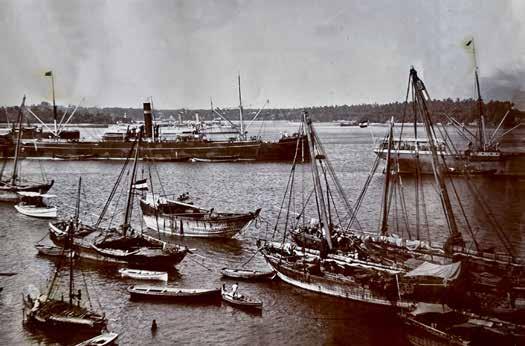
family, and at the age of 17 he was sent out to join an older brother on a sheep station in Australia, via South Africa. Family legend has it that when the ship docked in Mombasa, he stepped ashore and decided almost immediately that he wouldn’t be getting back on board. What drew a teenage Scot to abandon a passage to an assured future in Australia? What was British East Africa like? What was it in Mombasa that made him believe that this new entity, not yet even a colony, was his future? Among his papers is a copy of The East African Trade Journal for May 1907, which I think he must have acquired on landing, and kept for sentimental reasons, as it showed the shipping arrivals in Mombasa, for the month of April. The most likely ship he arrived on was the SS Glenelg, Glasgow-registered and operating from Glasgow to Cape Town, which arrived on 14 April 1907, according to the shipping list.
A partial clue to Mombasa’s attraction can be found in a description of an arrival in Mombasa, three years earlier, in W Robert Foran’s wonderful book, A Cuckoo in Kenya: “Everything was vividly green and sweet smelling; the air heavily laden with the aroma of the spices of the Orient; and over all rested a lethargic atmosphere of serenity…The island itself was clothed in matchless emerald-green. Here and there the curious outlines of the baobab trees vied with the feathery tops of coco-nut palms; and towering above them all were the giant, dark-green-foliaged mango trees.” It sounds irresistible. Mombasa, of course, has a long history, arguably longer than


any other Southern hemisphere city, stretching back a thousand years or more into the mists of oral tradition. Its recorded history is a study in competition between foreign powers, colonisation, and eventual freedom. Probably because of the battle between Portuguese and Arab interests, Mombasa was known as far away as England, and mentioned in Milton’s Paradise Lost, speculatively, as part of an Ethiopian empire. Mombasa was a thriving centre at a time when London was little more than a village under threat from Saxons and Vikings. Da Gama regarded it favourably, and his successors made it their East African stronghold. Later, Lieutenant Boteler in Owen’s Narratives of the Voyages to Explore the Shores of Africa, Arabia and Madagascar declared that “…there is not a more perfect harbour in the world.” Even now, the Old Town is redolent of the ages, and as Sir Charles Eliot observed, “…the entrance of the harbour should take a high rank among the views not only of Africa but of the world.”
W J would have gone ashore by lighter, as no proper dock had yet been built. The young Scot would have made the trip into town on the trolley railway, a sort of man-powered tram pushed along tracks, laid at the time of the Uganda railway, “[r]attling along at a good rate” according to Meinertzhagen in his Kenya Diary. The terminus was reached by walking up a track from the rough jetty. We don’t know if W J used the Africa Hotel, the slightly better Grand Hotel, or the Cecil Hotel, but it is to be hoped that things had improved in the three
years since Foran’ s arrival. Through a booking error, Foran found himself at the Africa, the least salubrious of the three. It was described in East Africa as “…containing 12 bedrooms, dining room, a large verandah overlooking the harbour and open sea, and a bar and sitting room, and only the best brands of liquor are kept…[T]he hotel should satisfy the demands of the most exacting visitor to Mombasa.” In a perfect illustration of the gap between advertising and reality, Foran described it a little differently: “…a positive nightmare. If the dinner was execrable, the beds were infinitely worse, and the offensive odours breathed simply unprintable…I did not know there were so many and different abominable smells in the world…” His description of a nightlong battle with fleas, bedbugs, mosquitoes and moths is worthy of Jerome K Jerome, an English writer and humourist, best known for a comic travelogue, Three Men in a Boat. The Grand, too, had its problems - “a dinner of tinned salmon and corned beef…as the rain dripped steadily through the ceiling…mostly it went onto my plate…” Despite its long history, Mombasa in the early 1900s was still very much in its infancy in terms of traveller comfort.
The real centre of socialization and business networking was the Mombasa Club. It has always seemed to me that as soon as the second Brit arrived in a new territory, the first would say, once introductions were made: “I say,
Carruthers, I think we should start a club!” By 1907 the Mombasa Club was already entering its second decade with over 500 members. W J might have stayed there; no doubt he would have taken advantage of its hospitality. Here he would have heard about the interior - the good with the bad. The Uganda Railway was out of its infancy, but tales of Paterson’s man-eaters would still have been part of the currency of conversation, and the interior was far from settled. Old-timers would have relished regaling a raw young Scot with tales of death by tooth, tusk, horn and venom.
No doubt he would have been directed to the various outfitters for appropriate tropical kit, and there were plenty of suppliers. Mombasa was a thriving town of 30,000, with many outfitters, importers, exporters, agents and, even then, a tourist operation offering hunting trips to the interior. Here were warehouses filled with ivory and skins for export, and even some basic industry, in the form of cotton ginning and tanning. Mombasa was the primary town of what was to become the colony, but not for long. The year of W J’s arrival in 1907 coincided with Nairobi, fed with people and goods by the new railway, becoming the capital. The East African Standard was still published in Mombasa, so he would have turned there for information. He would have learned that items like spine pads and pith helmets were standard kit for white settlers, and
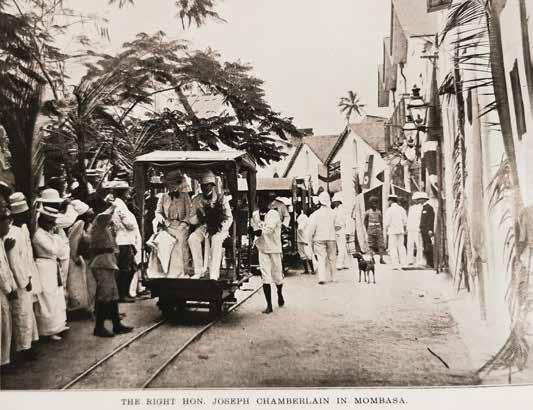


The Right Honourable Joseph Chamberlain riding in the tram in Mombasa on his visit to Kenya in December 1902. At the time he was the Secretary for the Colonies. He was on his way to South Africa and stopped in Kenya to assess the country and its newly completed railway. He also met with Charles Eliot, the Commissioner for British East Africa, to discuss settlement policies.
(Photo taken from East Africa, 1906 - Foreign and Colonial Compiling and Publishing Co).

Shariff Jaffer & Co., one of the merchants in Mombasa in 1907. They advertised “…a collection for which the whole of Persia has been ransacked.” (Photo taken from East Africa, 1906Foreign and Colonial Compiling and Publishing Co).



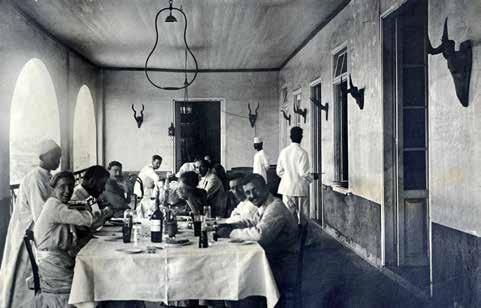
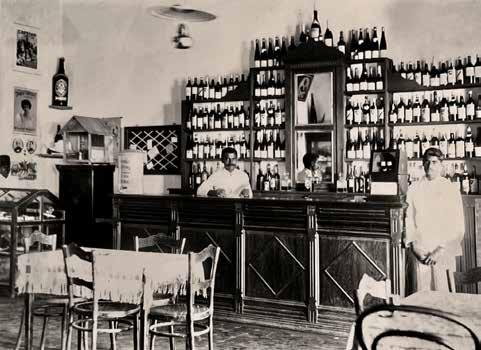
we have a slightly later photo of him wearing one, purchased perhaps at one of the emporia dealing in settler essentials. They ranged from general merchants, wholesale, and retail, to mass importers and exporters. The trading names alone give an idea of the cosmopolitan nature of Mombasa’s businesses: Carrasco, de Souza, Dhunjee, Smith McKenzie, Max Klein, Moolchund, Papadopulo, Hilton, Raschou, Hansing, Societa Coloniale Italiana, Central African Trading Company, East African Stores and others from the far reaches of Europe, the Middle East and Asia. I imagine W J walking into Shariff, Jaffer & Co, which proclaimed itself thus: “The curio hunter will find in Mombasa a collection for which the whole of Persia has been ransacked.” How much better is that than a small general dealer in Aberdeenshire, or indeed, a sterile modern mall?
The dining area for the Grand Hotel in Mombasa was on the veranda. (Photo courtesy Sue Deverell Collection)


We know little of what the young Scot did next, except that within six months he was the owner of land up the coast. How it was financed, we don’t know, possibly with funds from Scotland, but almost certainly with the assistance of the British East Africa Corporation, successor to McKinnon’s Imperial British East Africa Company, which already had interests in cotton up the coast and a processing plant in Malindi. According to East Africa, though, the crops in 1906 and 1907 were poor and prices low, and we can conjecture that this is what prompted W J Dawson to move inland, a journey we’ll follow in the next article.

When our father was Provincial Commissioner in Kisumu, we had a wire-haired terrier who was never going to win any obedience classes because she only did things that she was asked to do if she could see the point. She loved chasing balls, people, people on bicycles, other dogs, cats and so on. All these activities were strictly forbidden, to her amazement – after all they were such fun! This terrier was called Taji (Swahili for crown) and we loved her dearly.
One day we all went to the new sports stadium to see the athletics that were being held that day. Dad was the guest of honour. We begged to take Taji with us and our father reluctantly gave in, on the strictest conditions that she must be kept on a lead at all times. We watched the sports with interest. Taji behaved beautifully and then the last event started.
It was the mile, eight laps of the track, I seem to remember. We all got more and more excited as the runners raced and then they came around the bend for the second last time to take the bell. This was too much for Taji! She slipped her collar and raced down the steps to the track – we held our breath -a disaster was about to overtake us we felt sure. Taji went straight on to the track and took off after the runners; when she came to the tail-enders, instead of nipping their heels or barking, she swung out on to a middle lane and overtook them. On round the track she raced, slowly overtaking each runner. The crowd by this time were roaring, not about the champion runner I’m afraid, but about one small, untidy terrier who was having the time of her life. She overtook the lead man, passed the winners tape, slowed up, shook herself and, grinning from ear to ear, she came back to her family. The crowd loved every minute of it! We cowered in case of our parents’ wrath, but one untidy, panting terrier had shown how it should be done.

Susan (Williams) Duke, UK. From Under the Baobab Tree, a collection of memories from Old Girls from the Kenya High School
Maarifa!
After reading Peter Goodwin’s story about his
Opel Kapitan in the Only in Africa section of issue 119, I was reminded of a similar story that I refer to as Maarifa, such an evocative word in Swahili.
In the mid-70s I needed to get to Nairobi, and very luckily a friend of mine Italo Fioravanti very kindly offered me a lift in his 20-year-old petrol Land Cruiser with the three-speed gearbox.
The trip was uneventful until about 20 kilometres before Voi, when the engine started to knock. By the time we reached Voi the noise had reached such a level that I told Italo the car was not going to reach Nairobi and we had to stop in Voi to fix it.
For a small fee, we rented the pit in the Caltex petrol station and started work. We removed the sump to reveal a dark blue connecting rod. I told Italo and the surrounding mechanics that this was not a problem. We could fix the engine and drive to Nairobi. All the mechanics said this was impossible. We would have to strip the engine, grind the crankshaft in a workshop in Mombasa, and rebuild the engine before we could continue.
I said, “No way, we will do a Maarifa,” meaning we would use our practical knowlege and know-how. This was greeted with gales of laughter from the mechanics, but we continued with the work regardless.
We unbolted the offending connecting rod, removed the cylinder head, then pushed the piston out of the top of the engine and put the connecting rod – still very hot - and piston on the passenger floor. We then bought a leather belt from a Maasai who was selling these to tourists. We cut a small section of belt in the exact shape needed so we could attach it tightly onto the crankshaft with two jubilee clips. This stopped the oil coming out of the hole.
We then re-attached the sump, removed the push rods to stop the valves operating on this particular cylinder, bolted on the cylinder head, filled the engine with oil and fitted a new oil filter, all in about three hours.
Then, much to the surprise of all the mechanics, we restarted the engine and happily drove to Nairobi. We even had enough confidence to drive back to Mombasa. Maarifa!
David Horsey, Mombasa

Shooting from the train was by no means unknown in the early days. John Hunter, one of the greatest big game hunters in East Africa, who arrived in the Protectorate as a very young man in 1908, tells in his iconic biography, Hunter, of his early days working as a guard on the railway, before he realised that it was possible to make a living by hunting. He had an arrangement with the engineer who would give him a signal with the whistle when he saw something near the tracks ahead that might be of interest – three toots for a leopard, two toots for a lion. Hunter would grab his rifle from his cabin, lean out of the window, take aim and fire. If his shot was successful, he would pull the communication cord to stop the train so that he and a servant could jump down and skin the beast. As Hunter said, “People were in no great hurry in those days and drivers were helpful.”
Submitted by Chris Durrant
I was 11 years old in 2018 when my family came from Madagascar to stay at Sunrise Acres near Likoni on the Kenya coast. Sunrise Acres was the perfect getaway with a huge playground, many farm animals and nooks and crannies to explore.
One night as I lay under my mosquito net listening to the rain pounding on the roof I felt something bite me. Thinking it was a mosquito, I ignored it and dozed off. Soon I felt another bite. I realized it was not a mosquito but some sort of bug. Annoyed, I found it and groggily brought it into the bathroom so I could see it in the light. To my surprise the bug was just an ant. A rather large ant but an ant, nonetheless. I heard my mom in the kitchen and decided to show it to her the ant.
When I showed her the ant she placed it on a paper towel, said, “That’s strange,” and went into my bedroom. I followed her and after Mom had turned the light on she was staring at the wall beside my bed. My sister was sitting up in bed and also staring. I glanced at the wall and did a double take. Thousands of ants crawled all over the wall.
We learned later that they were seeking shelter from the rain. There were now multiple ants on my bed so I sat down on my sister’s bed while my mom explained that these were safari ants and they attacked everything in their way. My Dad made a phone call and was told to sprinkle ashes wherever we didn’t want the ants to come. My parents found some ashes and sprinkled the gray dusty ash around all the bedposts and alongside the wall.
My sister and I moved into a spare bedroom and my 4-year-old brother, who had been sharing our room, moved in with my parents. Everything calmed down and we had no more unwanted visitors that night.
The next night it was raining again at bedtime and we hoped the ants would not come into the house again or if they did they would go to the same room they had the night before.
Shortly after we had gone to bed, our parents found more safari ants in the house and they quickly placed more ashes throughout the house and moved the beds away from the walls.
Eventually I laid back down and tried to sleep. Suddenly I felt something bite my scalp and when I found an ant in my hair, I panicked. I ran out to my Mom in the living room crying, “I have ants in my hair.” After a quick search she found several more safari ants in my hair. She called my sister out of our room so she wouldn’t get any ants on her. I sat on the couch while we kept finding ants in my hair. When Mom thought she had gotten them all, she moved me and my sister into their room. By now I was terrified of safari ants, so I kept staring at the ceiling keeping a lookout for more ants.
Soon ants found their way into by parents’ bedroom so we moved back to the living room. I soon discovered more ants in my hair. I spent the next half hour anxiously combing my hair with my hands looking for ants. I found several. Whenever I thought I had finally got all of the ants out of my hair I would feel another bite leading to another five minutes of troubled searching. My parents pulled an all-nighter, as my siblings and I spent our last night at Sunrise Acres restlessly tossing and turning on the same small couch trying to go to sleep with the lights on and an insect invasion taking place underneath us.
We left the next morning tired and slightly traumatized but with a new story to tell.
Elisabeth Johnson,
Nairobi


Do you have a short, funny or quirky story about something that happened in Africa? Send your contributions marked Only in Africa to editorial@ oldafricamagazine.com, or by post to Old Africa, Box 2338, and Naivasha - 20117 Kenya. Please limit stories for Only in Africa to 350 words or less. Include your name and address in case your story is published. We pay KSH 1000/- for each published story. Sorry, we cannot return submissions to our Only in Africa column.



This article originally appeared in German as “Bericht über die im Auftrage der Geographischen Gesellschaft in Hamburg unternommene Reise in das Massai-Land,” published in the geographical journal Mittheilungen der Geographischen Gesellschaft in Hamburg, 1882-83, and which formed the basis of Fischer’s 1885 book Das Masai-Land. The translated sections here comprise section I. General Report (pp. 36-99) and section III. D. Dr. G.A. Fischer’s ethnographic collection from East Africa (pp. 275-279).
This article was translated by Eckhart and Almut Spalding (the latter is a retired professor of Germanic Languages and Literature, Illinois College). For the sake of authenticity, Old Africa has chosen not to edit Fischer’s use of words like Negro and Washenzi, which are now objected to as pejorative, but in his day were descriptive.
Report of the Journey into Massai-Land, taken under commission for the Geographical Society in Hamburg by Gustav Adolf Fischer
With the warriors as our guides, we soon made progress on our cautious march unharassed, and reached a campsite not far from Mount Longido, which is also called Ngabut’uk. Only a pond of clay-colored water was to be found there. The soil was blanketed with thick, gray-yellow dust, grass, and withered shrubbery. At my request, the two Massai also stayed the night in the encampment. As a sign that nothing was to be feared, they placed their spears in my tent. One of the warriors in particular had, for European aesthetics, very pleasant facial expressions, which hardly resembled those of the Negro-type: a benign gaze which did not betray any of the murder and thievery which doubtlessly even he partook of, or at least had partaken of in the past. He was even so courteous as to haul better water for me, from some distance away.

After the two were sent off with gifts the following day, we began the march to Mount Longido, which rises to c. 2500 feet above the plain. The encampment was situated at the foot of the same, at c. 1350 feet elevation. Here too were camps of Massai, who drove their livestock to what was a nearby spring with only a small amount of water. The Massai call the area ngare ngishu, that is, drink of
livestock. The tribute payments never ended; almost daily we encountered new Massai. Often the young warriors came from far away, so as to obtain presents which you can never refuse if you want to remain relatively safe from harassment during the night. The wavelike grassland gently continued to rise, in places sprinkled with scraggly mimosas. The D’onyo er’ok la Matumbatu was briefly visible to the northeast. In the flat called Kibalb’al, in which there were various ponds with rainwater and lush grass, we reached the mountains of Matioma, which we now had to traverse.
The warriors from this area had just returned from a failed raid against the Kavirondo at Victoria Nyanza, and appeared to want to make up for it vis-’a-vis us foreigners. Namely, some of them let loose a raging ox which charged the caravan, in the hope that this would enable them to steal various things in the general confusion. Some of the porters had already begun tossing away their loads, but the raging beast turned away a short distance from them and pursued a tall Massai warrior, who was carrying a large shield colored black, white, and red. It ran him down to the ground and delivered several blows to his ribs. Since Ngare Nairobi we had not had such a tumult. I had not closed the door to my tent due to the heat, and [the Massai] observed me in the doorway as if I were a monster exhibited in a booth.
Very early on the 12th of April we slipped away and reached the mountains of Matioma in a more northerly location, up to a height of 1660 m above sea level, and where the highest mountain peaks reach another 2-300 m higher. A small spring with pleasant-tasting water flowed in an area which the Massai call waso neib’or (meaning white, clear stream), which already lay on the northern slopes of the mountains. Here the Massai had constructed various ponds and dams to collect water for the dry season. Until now it had rained only little, with southeasterly winds, which dominate in the area surrounding KilimaNjaro. But in the immediate vicinity of the mountain one finds very thick rain clouds. The main season of rains, which normally begins in Zanzibar in the first days of April, appeared not to have begun in this area yet. The fact that there are very heavy rains is attested by the numerous wide and deep runoff channels

on the northern mountain slopes. These drain masses of sand and rock to a plain, and the waters mostly reach a basin [to form a lake] at the foot of the beautiful Gelei Mountain (which is close to 8000 feet tall).
The lake lies at 650 metres above sea level— which is to say, not much higher than the ford over the Pangani at little Arusha. This area stretches from s[outh]w[est] to n[orth]e[ast] and has the shape of an elongated oval with a width of about 5 English miles, and a length of about 20. This basin, which is presently dry, is named by the Massai Kiwangaine. The western and eastern shores, if one may call them that, exhibit almost cleanly-brokenoff rock formations which have a height of up to 80 metres. The ground consisted of a grey-yellow lime, [and] the deeper spots were covered with thick reed grass. Numerous small, cone-shaped hills dot the graduallyinclined Gelei Mountain, especially at the mountain’s foot. The foot [of the mountain] was partly torn up [with fissures], and was partly covered with unusual formations. The stretch of land [we] traversed was littered with flintstones. In various locations rainwater had pushed through the rock formations around the edge of the lake. This water had formed gorges containing ponds which provided drinking water. Here we found ourselves in the D’oglan district, which the Massai had departed because of the drought, leaving only a few behind.
After we had traversed through the terrain which rises on the western boundary up to 740 metres, we arrived at the salt steppe at Ngurum’an, which drops again to 620 metres. Here flows the small river called waso nyiro (gray river), which empties in the salt lake which begins not far southwest of Nguram’an. The surface of the steppe was completely dry, partly covered with a thin salt crust that looked like a white frost. The lime earth, which during heavy rains becomes swampy, peeled up in flakes and crackled under the foot of the traveller, as if he were walking over earth which had been frozen solid. The flatland is almost devoid of vegetation. Only sparse grass grows at spots higher up, as if on islands which remained after rainwater had washed everything else away. Through this flatland stretches a mountain range, beginning perhaps 100 English miles east of Victoria Nyanza, running roughly north to
south, beginning below 1º S [latitude] with some parallel ranges. This mountain range usually rises abruptly up from the plain, up to 3000 feet, and stretches to 4º S [latitude]. According to merchants, it reaches as far as Umb’uwe. The mountain named Mount Sambu is a prodigious peak in this range, not far from Ngurum’an.
The Wakwavi call this country Bagassi, and it had taken us 13 days’ march to reach it from Chaggaland. The porters had only lived on meat for several days, and here in the Ngurum’an (among the Massai, nguruma means negro corn) we held a 7-day rest as to allow them to access vegetative sustenance. As mentioned before, the narrow land at the base of the mountain range is inhabited by agricultural Wakwavi, who grow almost exclusively negro corn, and a few beans. A small, rocky stream which originates in the Sambu mountains brings good water yearround, and enables the natives to maintain this culture [which requires them] to divert the requisite water to their fields using numerous ditches.
Due to the increased moisture, the foothills of the mountains are festooned here with a lovely acacia forest. They are bounded by thick bush and grass, in which rhinoceroses and elephants are common. The latter in particular cause great damage to the corn fields.
The Wakwavi of Ngurum’an are a small, peaceful people like their brothers of little Arusha, whom the merchants gave the ivory to keep until the return of the caravan. They are tall, thin figures who dress much like the Massai. They possess [only] a few livestock, mostly just goats. The Massai consider themselves to be their lords, and also compel [Wakwavi] youth to participate in their raiding parties.


Before I continue with the exposition of the journey, I would like to describe the manners and customs of the Massai. The name Massai is not given to them by the surrounding negro peoples and the inhabitants of the coast. Rather, they describe themselves as such. Often I have heard them call themselves Olmassai in their speeches. The Wandorobo call them Loig’op (plur. Eloig’op?), meaning “the owners of the land.” Among the inhabitants of Umb’ugwe, not far from Ugogo, they call them Wahuma.
The Wakwavi are divided into two tribes,
the Olgorti and Ilkid’ong. The former live, or lived, in the forested districts east of VictoriaNyanza around the little river ngare dab’ash (broad water; dab’ash means wide but thin, shallow). The latter have their homeland in the region of Laikipia; that is why they are said to be called Ilkid’ong (which literally means tobacco pouch), because they love snorting tobacco above all else. The latter speak a dialect distinct from that of the Massai and their brothers of ngare dab’ash, and their bodies are distinct too. They have consistently dark-black skin and are tall and very thin. Their hair is less curly (plain, according to a merchant), the face is lean, the bodily features are sharp and generally resemble those of the Somali. It cannot be doubted that the Somali, Wakwavi, Gala, and Massai have a common lineage. The evidence for this is not only in the bodily structure and way of life, but also the language. It is very different from that of the surrounding negro tribes, which are all more or less related to Swahili.
The Massai generally possess a thin stature, but without appearing emaciated. It is much more common for the youth to have round forms, with prominent muscles. One rarely sees smaller people. The heads are elongated,
with foreheads that sweep back, but there are great differences between their faces and expressions. One notices sympathetic, pleasant expressions next to brutish, animallike ones; and very noble ones next to the plumpest negro faces. There is particular difference in the shape of the nose, and sometimes it is not in the least reminiscent of the negro type. The hand is smaller and longer than that of the negro. The skin color is dark, from dark brown to deep black. Lightercolored individuals are very rare. The women are also not lightly-colored. One should be careful with referring to a complexion as being reddish, since the Massai rub themselves with fat and a red decorative [ochre], like many other peoples. The women have a small, clipped nose, moderately fleshy lips, and are more gaunt than well-built. It is not rare for them to have a hint of slanted eyes. But what is most noticeable, especially among the older women, are the forward-protruding upper middle incisor teeth, which is much less common among the men. Sometimes the effect is so pronounced that the lips can hardly close, and I thought it was an artificial modification. There is no gap in the front teeth as is reported by other voyagers.



Married individuals and all females shave their head. The removal of hair on other parts of the body is common, and the beard hairs are torn out. The young people of warrior status style the hair of their head according to each person’s taste, such that one encounters the most varied hairstyles. Some of the hair is braided into small strands which evenly hang around the head, some pulled together in the back in chignon style, some in the front lying on the forehead `a la Poni. Sometimes there is a long braided pigtail in the back, wrapped in raffia. Also very popular are three small arch-shaped, upwards-bent horns which protrude over the forehead. The hair is always competently daubed with red ochre and butter. The same goes for the body, which they apparently never put in contact with water unless it rains. They often paint red or white makeup thickly onto their faces. Even though relations are generally patriarchial, and while there is no overlord and no real chieftains, and everyone is their own master, in a military context there is still a solidarity and a certain order, which one cannot expect in [an environment] of complete individual freedom. The people
are split between warriors and non-warriors: elmur’an (sing. Mur’an) and elm’orua (sing. m’orua). The Level’es constitute a transitional class: people who are already married, but under circumstances may still go off to war. The non-warriors often include very young people who have inherited a large herd of livestock from their father, or are satisfied with little, without the desire for a raiding life. To wit, the only motivation for war is cattle. The need for them is great, and since every man wants to possess a certain number of them before he marries, he must go out on raiding parties against neighboring peoples to obtain them. The elmur’an is not permitted to marry, and they even refrain from indulging in alcoholic drinks and tobacco. In response to my questioning, they told me this is so that they do not lose strength and fighting ability.
To be continued...
Has someone “borrowed” some of your back issues? Or do you know someone who would enjoy reading back issues of Old Africa?
Years 1 & 2 (Issues 1-12) are now sold out! To
All Other Years (6 issues) Ksh. 1000/- Ksh. 1800/-
Please make cheques or money orders out to Kifaru Educational & Editorial and mail to PO BOX 2338 NAIVASHA, KENYA 20117.
Mpesa payments can also be made to: MPESA BUY GOODS #89867.
Please make sure to follow up with a text or email stating what the payment is for and shipping address if applicable
If you are overseas you can pay with a credit card at https://oldafricamagazine.com/donate


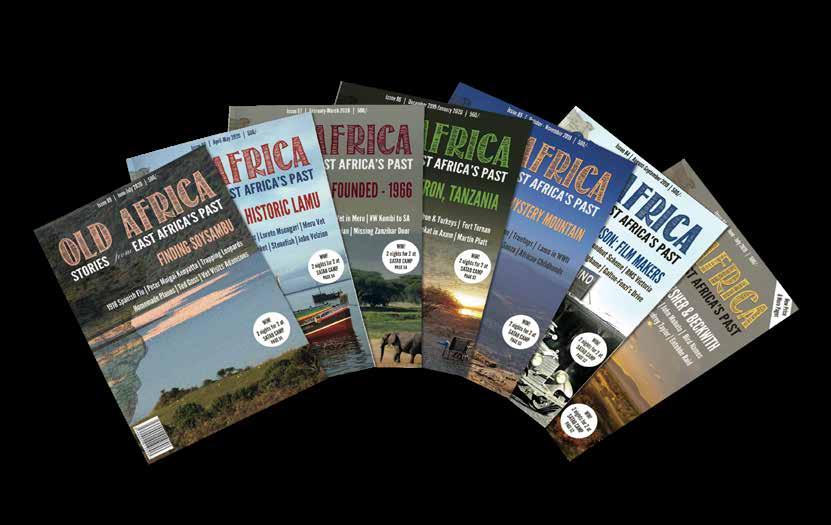
by Greta Drummond
Mhorag Candy sent in a story from her mother’s diary, written about her mother’s journey down the Nile in 1945, with her husband, William Anderson, and her children, Alasdair and Mhorag. Mhorag wrote: “I could find only a few rather faded photos in our albums relating to the journey. This is somewhat of a mystery as my father was a keen photographer, but perhaps most photos were lost - possibly in the post or in the development process.”
Taken from Greta Drummond’s Diary
At the latter end of 1944, the Kenya & Uganda Railways and Harbours management called for volunteers amongst their staff, to apply to take their overseas leave. It was intended that travellers were to use the Kenya & Uganda Railways and Harbours lines as far as the Sudan, then Sudan Railways and Nile steamers to Egypt and from there by Egyptian Railways as far as Alexandria. The latter part of the journey would be by sea to UK.
My husband opted to take this trip, and we were advised that our anticipated departure date would be April 1945. My husband had received all the documentation for the journey sometime earlier, and our family - my husband, myself and our two children, ages 3-1/2 and 1 year, left by train for Uganda on 28 April 1945.

The Uganda Mail train, which at that time, ran twice weekly, pulled out of Nairobi


in the morning and headed north, climbing up to Kikuyu and Kijabe, passing alongside the Great Rift Valley, and descending along the eastern escarpment, until we reached Nakuru in the evening. Nakuru station was covered in thick soda ash which had been blown in from nearby Lake Nakuru. The lake had been slowly drying out, due to a prolonged drought in the area. We left Nakuru just as the sun was setting, seeing many baboons en route, and reached Eldoret around 2 am. This brought about a rude awakening as a great deal of shunting took place, amid
loud noise and bright lights. My son enquired whether we had reached Scotland, our destination, but there were many miles to go yet!
Our next stop was at the port of Namasagali on Lake Kioga in Uganda, which we reached next morning. Our carriage was taken right to the wharf, where we boarded the SW Grant, a stern-wheeled paddle steamer, which was to take us on the next portion of the journey. We sailed along the lake on a lovely day, and saw many crocodiles as we passed, but only a few hippo. That evening was beautifully cool and pleasant, with a
full moon, and after a long sleep, we awoke to see, in the distance, a few huts and a pier, the port of Masindi. After disembarking and having eaten breakfast earlier, we drove 29 miles by bus to the township of Masindi, the road being much better than we had expected, and the journey took less than an hour. Masindi is quite attractive, but too isolated to be a pleasant place to be stationed at. Soon, we reached the Masindi Hotel, sitting high above the town, and found our rooms very comfortable. Our laundry was taken away, and returned, beautifully fresh, that evening. After we had rested, afternoon tea was served on the verandah.
We took a quick walk, but dark clouds were looming on the horizon and we just made it back to the hotel before a tropical rainstorm, which lasted about half an hour. The effect was to cool the temperature down, a welcome respite from the heat.
Our party of travellers from Nairobi to Cairo was small: a Mrs Hyde Clarke and her two daughters; Mrs O’Neill; Mr McCall; and Mr Parry. Mr McCall, who was based in Juba, had had to travel from there to Kampala for dental treatment - a long trip to the dentist! Mr McCall told us that, due to recent heavy rains in the area, the Nile had risen some inches, and this was a relief, as it meant the steamers would not have too much difficulty - previously there had been some doubt as to whether there was enough depth to make the passage. After a comfortable night here, we boarded a bus to travel to Butiaba on the edge of Lake Albert (named after Prince Albert), a distance of some 40 miles. The scenery

changed from scrub on the plains, and as we climbed the hills, to plantations of majestic rubber trees, tall and regal and cool looking. We soon started to descend down a steep escarpment and on to the sandy shore of Lake Albert.


We found that there had been an alteration to our schedule. We had been going to join the lake steamer Lugard, but she had developed a leak, so we found ourselves boarding the SS Robert Coryndon instead. We sailed across the lake, the surface being very rough, and for the first time I suffered from lake sickness, missing lunch! It became much calmer in the afternoon, but on the approach to Pakwach, heavy rain fell, blotting out the shore. It had previously
been a lovely sight, with the hills of Uganda on one side, and the Belgian Congo on the other. We tied up at Pakwach at 6 pm, a rather unattractive little place, with just one house and two corrugated iron buildings. Cotton is sent from here to Rhino Camp, further up the Nile. On this last part of the sector we saw many elephants and numerous hippos. We spent the night on board, then after breakfast, boarded the Murchison, a smaller steamer to continue our journey. The SS Murchison was very small and cramped, with only four cabins, each with two bunks. The two children shared my cabin, while my husband was allocated the dining room table for his bed! Sailing that morning was pleasant and cool, but then
the afternoon and evening became extremely hot. We kept the children on deck, sharing a deckchair until they fell asleep. Our party then numbered ten, and after dinner, we all sat out on deck, where it was now very cool and peaceful. In fact, it was one of the loveliest evenings I have seen - a flaming gold sunset, followed by a rising full moon, outlining the hills in the distance, hardly a sound, the silence broken only by the chugging of the engine, the night sky bright with stars, the reflections on the water, and a light breeze. Despite this we had to return to the hot cabin, having a fairly good sleep, despite the heat. Nimule (Sudan) consisting of two iron-roofed sheds and a rest hut, was reached next morning.
We put our watches back one hour to Sudanese time and then had lunch at 10.30 am! Two estate cars, which had come from Juba, met us, bringing with them passengers who were to return to Kenya on the Murchison. We said our farewells to the Goan steward and African crew who had looked after us so well. Our cars, with tinted windows and comfortable seats, set off for Juba, the distance being 110 miles, where we were expected to arrive at about 2.30 pm, but here our luck was out, as our vehicle developed a leak in the radiator. My husband helped to patch the leak and told the driver not to exceed 30 mph. With the other car following, in case of any further breakdown, we set off again. After a further two stops, to prevent overheating, we were becoming thirstier and thirstier. We had only two Thermos flasks of water and these had been emptied.
The children were exhausted, and after the long hard drive, we found ourselves at a ferry on the edge of the Nile, some three miles from Juba, situated on the other side. Two Italians, waiting for the ferry, took pity on us and gave us some oranges, which were so welcome. The second car failed to arrive, and after some delay we crossed the ferry to find concerned Sudanese officials worried as to what was causing all the delay. It was established that the second car had broken a fan belt and a rescue party was sent out to retrieve this
second vehicle. Tea was served on our eventual arrival at our hotel, and a great fuss was made of everyone by the stewards. On the verandah, two monkeys were playing and my daughter was most indignant when one of them stole her piece of cake and raced off.
After a full night’s sleep in lovely bedrooms with ensuite bathrooms, we rose early and set off by car to the river and then onto a barge which was to take us to join the Nile steamer Lord Cromer which, due to the low water level, was further




(Photo by Mhorag Candy)

downstream from Juba. It began raining as we left the hotel and continued for most of the morning. This was the real start of our journey on the Nile and it was to become a wonderful experience. We finally boarded the steamer late that morning and settled in. The cabins were very comfortable, being about 8 feet by 8 feet, beds not bunks, carpeted floor, dressing table, wardrobe, bed-lights and two fans. Adjoining this, down a small passage, were our washing facilities and a large window, which provided a much-needed flow of air. As all entrances had mosquito netting, we were able to sleep without mosquito nets.
The lounge and dining room were situated on the cabin deck, and on the top deck was an area completely netted off, where, on camp beds, you could sleep at night if it became too hot. The service and food on board were excellent. Bedcovers were folded back ready for the afternoon siesta, the bath cleaned as soon as bathing finished, as the Nile was neither ‘white’ nor very ‘blue,’ but a dirty brown


colour, which stained baths and wash basins very quickly. Early morning tea was served as soon as staff noticed you were awake, and at the same time, laundry was collected for washing.
The first day of our sail we became stuck on a sandbank for four hours, and, as the river twists and turns so much, this was soon to become a regular feature of the trip. The second day, we suffered from engine trouble and broke down completely. Fortunately, there was a cargo-carrying paddle steamer astern who could assist, but not until it had been to a small ‘port’ and dropped off some of its cargo. After some time, the steamer returned, and to our relief, managed to tow us behind him, surprisingly at a fair turn of speed, considering it was also towing four barges as well as ourselves. The next morning, this steamer suffered damage to a paddle wheel on a sandbank, but we were learning that this was all part of normal travel on the Nile. As we sailed slowly north, we passed papyrus covered banks, and occasionally a village.
We tied up at one of these villages, as it was here that two nuns were leaving the steamer to return to their mission inland. That evening, my husband got out his bagpipes, and as the sun went down, played a few tunes for the local Sudanese, who soon began dancing. It was a strange African scene, the sound of the bagpipes and some local people dancing, silhouetted against the steamer’s spotlight. When my husband finished playing, the villagers clapped and cheered. We set off once more, and during the day there were many crocodiles basking on the banks. They seemed to get larger and larger as time went by, lying on the sandbanks with their mouths wide open, enjoying the sunlight. I had a horror of what might happen if anyone fell overboard. As the trip continued, we also passed many dead and bloated carcasses, a very unappealing sight.
We were now approaching Malakal, where mail would be received and sent, and as we came closer, many fires were burning in the papyrus, the sky and river glowing red
with the reflection. These fires had apparently been lit by the villagers to clear the area for the planting of crops, ready for the oncoming rains. From the reports that we received on the radio, it appeared that the war with Germany would not last much longer, and this cheered everyone up considerably. Malakal is a very small place, one long street, with most of the shops shuttered. Several new passengers joined us here. When we were due to sail, some of the crew could not be found, but after a considerable period and constant hooting of the steamer’s whistle, they eventually came running. It appeared they had met some friends and decided to have a party.
We were now on our way to Kosti, and soon saw in the distance, a very large sandstorm, however, it passed some distance from the steamer. Next, we were once more aground on a large sandbank, and this time were stranded for two days. During this time, and despite endless manoeuvres, we remained stuck fast, and were struck by a severe rainstorm. We eventually managed to get free late on the second day, and set off again. Soon we were approaching a small landing place about 15 miles from Kosti, arriving at noon on Saturday 12 May, the day we should have been in Cairo. Leaving the steamer at 6.30 pm we motored to Kosti, an hour and ten minutes away.
The road surface wasn’t too good, but coming from Kenya, we were used to it. If the river had been higher, we would have reached Kosti on the steamer. At Kosti, we boarded the train, had dinner and settled down for the night. The Sudan train was the last thing in comfort, but
observing the countryside next day as we travelled, we could understand why - just desert. The windows were tinted, so sunglasses were not needed. The train left Kosti at 10.15 pm, due to arrive in Khartoum the next morning, but more rain fell, and we spent six hours at Sennor during the night. The rain had been ideal for our journey, making it less sandy and dusty. It was reported that there had also been heavy rain ahead of us, and when this happens, the train has to stop and wait, due to the track being built over sand, and hence many washaways. The delay here gave us the chance of seeing the wonderful irrigation system, with hundreds of miles of desert producing crops, especially cotton.
at 10 pm, we boarded a barge for the night, and awakened at 5 am to discover we had sailed alongside the steamer which was to take us to ElShellal. The river was very low and one could understand the many difficulties. This large steamer travelled quicker. It was most attractive sailing along, the colours beautiful, much like the Mediterranean Sea. Early mornings were cool, but later it became really hot. The night was cool and we slept well, reaching El-Shellal at 9.30 am, and the forenoon was spent on board, where we also had lunch, and advanced our watches one hour, which made the day seem short. We boarded our train at 3.30 pm, had tea, and left at 4.30 pm.


We arrived at Khartoum on 14 May at 3.30 pm and stayed at the Grand Hotel, on a rather rainy evening. We did not sleep well, and in the morning, staff told us it had been their hottest night. We were at the Zoo gates at 7 am, and were their earliest visitors. After breakfast, we took a taxi into town, and did some shopping and sightseeing, including a view of General Gordon’s statue, then on to Omdurman and the Khalifa’s House. Khartoum is well laid out, with many attractive buildings, and the White Nile flows past the front of the hotel, before it joins the Blue Nile at their confluence. That evening the sunset was truly beautiful. Tuesday was cool, and the service at the Hotel was excellent.
We left by train at 9.30 am for Wadi Halfa, one more wash-away ahead, another delay of six hours during the journey, but we were comfortable and did not mind. Arriving in Wadi Halfa
From having been “out in the blue” for weeks, we suddenly seemed to have been rushed into civilisation. All along the banks of the Nile, electric lights were shining, and, at the stations we stopped at, people seemed to walk quickly. The train travelled at 40-50 miles per hour and was most comfortable. The system of irrigation seemed almost impossible, yet here the desert was blooming. We passed Aswan and Luxor. Thomas Cook’s representative met us at Cairo Station, saw to the luggage going off in a rickshaw, and then produced another for us to drive along in. As most hotels were full, we were accommodated on a Nile houseboat. The houseboat was really a steamer anchored on the Nile in front of residential houses which had beautiful gardens. The noise and rush of the traffic driving on the right hand side of the road is taking time to get used to.
We visited the Pyramids,
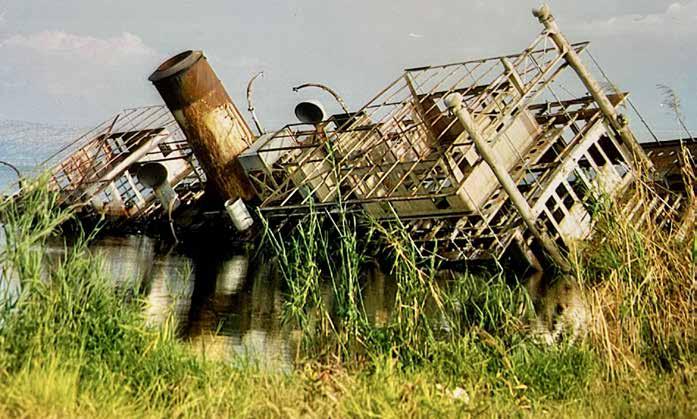
was very sad to see it in such a state.” The hulk has since been broken up and sold for scrap. (Photo by
the Sphinx and the Zoo, and usually walked in the cool of the evenings, admiring the mansions, one of which was Glubb Pasha’s. Night fell about 8 pm. The mosquitoes at night were very bothersome and I was badly bitten, but was re-assured on being told there was no malaria in Cairo. One day we toured the city and had morning coffee at Shepheard’s Hotel, a marvellous place, and through its doors has passed a great deal of history.
We left Cairo on 24 May at 7.15 am by train, en route for Alexandria and had a very interesting journey, the train travelling alongside the Suez Canal which was very busy. Alexandria was reached at 1.15 pm, and, once through Customs, we boarded a motor launch which took us out to our ship which was lying further out. Then up the gangway of the SS Tegelberg,


15,000 tons, which had been built in 1939 for the KPL line for the Dutch East Indies trade. In peace time, she carried 85 passengers. We sailed at 6.15 pm, all very tired, and the children were soon asleep. It was a lovely feeling to be on the high seas again.
Early on Sunday 25 May we passed through the Straights of Messina, viewing Stromboli and the Isle of Capri en route, and entering the Bay of Naples, dropping anchor at 6 pm. The Tegelberg was being used as a troop carrier and we were picking up troops at Naples. On Monday morning 26 May, a tug came alongside and took us into the harbouror rather - what was left of it. Approaching Naples, it was difficult to see much damage, but as we drew closer, and looking through binoculars, you saw all along the front, houses, factories, etc. in ruins, and in the harbour, burnt-out
destroyers and ships. This was our first insight into war devastation. We remained on board for three days while the troops embarked, and sailed from Naples on Thursday 31 May with almost 3,000 troops on board. Many were going on 28 days leave in UK, but some were Channel Islanders (civilians who had been taken from the Channel Islands by the Germans to work, and they looked in poor condition). Male civilian passengers were accommodated on one side of the ship, mothers, wives and children in large cabins sleeping 18 people. We were well cared for, having a lounge to use, and part of one deck. Lifebelts had to be carried at all times, and boat drill was frequent. The sea in the Bay of Naples was very rough. The Rock of Gibraltar came into sight at l0 am on Sunday 3 June. At Gibraltar we joined a convoy being made up, and
sailed the next day, 4 June at 4.15 pm, and this was such an unforgettable experience! As we stole through the water, with 12 large ships, all laden with troops, and an escort of five destroyers, the formation kept changing, with all ships and destroyers painted in grey, the wartime colour. As we sailed past the Rock, a salvo of guns was fired, as we were the last convoy of the war, and, in future, ships would sail on their own and unescorted. Blackout restrictions had been lifted. The convoy was made up of ships of the Empress and Castle lines, one of which was the Capetown Castle. The Bay of Biscay was calm, the Irish Channel and Sea the roughest. After Gibraltar, we had more cold weather than warm, and our thoughts were with the troops, who were all below deck, sleeping in hammocks.
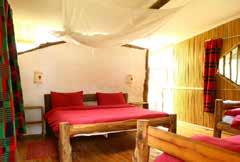

As we approached the Isles of Scilly on the evening of 7 June, two ships, going to Southampton, left the convoy, and later, as the Isle of Man came into view, another five ships left, heading for Liverpool. We were heading for the Gourock in the Firth of Clyde as our disembarkation point. It was with mounting excitement we passed Ailsa Craig, the hills around looked so green, friendly noisy seagulls diving and circling (and entered the area of water where the great “Queens” had done their trials). As we docked at Gourock, with the mounting anticipation of a family reunion after eight years, after I had sailed to East Africa in 1937 to join the Colonial Nursing Service. I was returning home with a husband and two small children to introduce to the family. We remained on board
for a further three days while troops and the Channel Islanders and other passengers for England left by train. There were no trains on Sundays for anyone, so it was Monday morning before we could disembark. The Queen Mary was anchored close by, and was so large that she obscured the June sunset. We bade adieu to the SS Tegelberg, at the end of our trip of thousands of miles, having seen so much, and gained an education en route.
In November 1945, my husband had been cabled to go to Southampton to join the SS Isle de France, another troopship returning to Kenya via South Africa, but there was great difficulty getting passages back for all of us at the same time, so the children and I had to stay behind, following in February 1946 on the SS Samaria, via the Mediterranean.
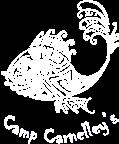


byTiras Waiyaki
This serialised story gives the life of JM Kariuki and how he became a prominent politician in Kenya in the 1960s. But by the 1970s he found himself in a struggle against President Kenyatta’s supporters. The story continues:
Kariuki retained his seat with an earthshaking landslide, garnering three times more votes than the combined total of his opponents and again attained the highest vote at constituency level in all of Kenya. His powerful enemies were completely rattled! In an interview with former Nairobi journalist Tony Hughes, JM said, “The results of last November (1974) elections represent a defeat for the present establishment. Consider my case. All the government authorities in my constituency worked for my downfall. When they realised that their efforts were failing, they banned me from speaking, from meeting the people in public. Then the ordinary people came flocking to see me, to tell me, ‘We know what those big people are doing to try to undermine you. But don’t worry. We have the vote.’”
In Butere and Tinderet respectively, Martin Shikuku and Jean Marie Seroney attained almost similar victories as JM. Seroney did so in spite of Moi campaigning in his constituency against him in a battle to be the Kalenjin kingpin. Notably, over 50 percent of



Kenya’s MPs lost their seats in 1974. Despite his electoral victory, JM was not given any ministerial responsibility at any level.
“Njonjo’s hand began showing in cabinet changes. I once witnessed the removal of JM Kariuki’s name from a list of appointments of assistant ministers,” Duncan Ndegwa, who was a Secretary to the Cabinet at independence, recalled.
JM went on in his interview with Hughes: “I was in touch with many other members of parliament who had fallen in disfavour - people like Martin Shikuku, Burudi Nabwera, John Seroney and Charles Rubia. These were the one (sic) who were left out of the government after the elections, in spite of their seniority and in spite most of them having held office before. They are referred to as ‘JM’s people’…In Nyanza Province hardly any true government supporters came through. I count a very large number of Members of Parliament as being with me.”
After the 1974 election, an incredibly vibrant august House had been birthed. Sharrif Nassir from Coast, George Anyona from Kisii, Grace Onyango and Onyango Midika both from Kisumu, plus others brought the momentum to what historians say was the most assertive parliament in Kenya’s history. They joined up with a number of non-Kiambu Gikuyu politicians and other vocal legislators forming a formidable opposition within KANU. JM, quite visibly, was their leader. To the chagrin of the system, he and Charles Rubia narrated how politically connected individuals had been allocated land in Maasailand.
On the day parliamentarians were sworn in, JM got the loudest cheer and a standing ovation from most of the MPs. This happened in Kenyatta’s presence. Nakuru Town MP Mark Mwithaga looked at Kenyatta’s eyes and he could tell that Mzee had noticed all was not well. The freedom fighters in parliament felt that their fellow freedom fighter, Kenyatta, had surrounded himself with Kenyan Africans who had supported colonialism and isolated those who fought for Kenya’s freedom.
Nowrojee traced the source of this disappointment when speaking about this era on KTN News. “Unresolved political issues between the loyalist Kenyatta government that had taken over power in Kenya and those who had brought about independence. Kenyatta
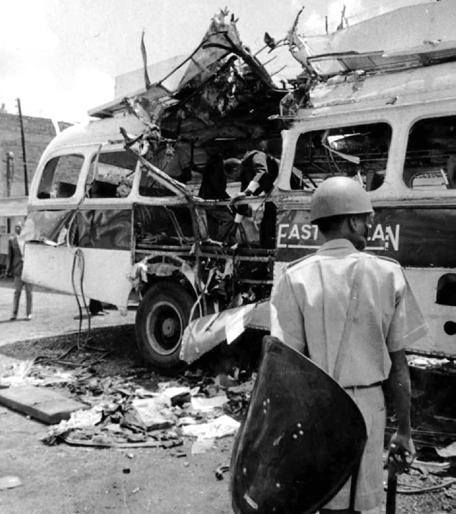
was breaking those promises and others. There was the assassination of the General (Baimungi) and the refusal to negotiate with those coming out of the forest.”
JM’s cousin, Kanyi, narrated to KTN News how one day while they were playing darts at the MP’s Castle Inn Hotel, someone started a conversation. JM stopped playing, turned around and started gesturing, “Do you know why I am angry? I don’t hate Kenyatta, I don’t hate anybody but look here, you all know about the game of football. We played a game of football as one team, our side won and our captain went to receive the trophy but as soon as he received it, he turned back and went to celebrate with the losing team. That would make anybody angry. I am not angry with the person. I am angry with the action!”
JM started leading MPs in organizing how they would elect members to House committees. Joe Khamisi writes that JM was also planning to introduce a motion in parliament that would have implicated Kenyatta in corruption including his involvement in illegal trading. He led a group of many likeminded legislators and they all started being trailed but none as much as JM. A known jailbird and criminal turned police informer called Kinyanjui, alias Mark Twist, who had been sentenced to two
The bombed out OTC bus, which JM Kariuki had been scheduled to board to travel to Mombasa. He decided not to travel at the last minute. 27 people were killed and 100 others were injured in the bombing.


years imprisonment was secretly released from prison where he was serving a sentence.
According to Mark Mwithaga this took place in a magistrate’s private house. The Standard newspaper reported that this happened on a Sunday at 9 am. Twist was assigned to trail JM and this he did with abundant confidence as most people thought he was behind bars. Joe Khamisi described Twist as, “a well-known playboy in the Nairobi nightclub scene.”
In 1974 JM delivered his most famous speech, one that captured the country’s sad state of affairs but his enemies used this against him, “Kenya is a country of 10 millionaires and 10 million beggars.” This was reportedly followed by the burning of 700 acres of wheat on one of Jomo Kenyatta’s farms by unknown persons besides malicious slaughtering of his cattle. The information was subsequently delivered to Mzee and JM’s speech was painted as having incited bitter peasants to destroy the president’s property.
A few days to Christmas 1974, JM and Mwithaga were playing darts at Nakuru’s Stags Head Hotel when Kenyatta’s oldest child Peter Muigai, who was also serving as Assistant Minister for Foreign Affairs, walked in with Nakuru Mayor Mburu Gichua. Mwithaga recalled how they froze when the duo told JM
that he had brought trouble from Nyandarua to Nakuru. They allegedly cautioned him that this was Nakuru and they could finish him. Koigi wa Wamwere’s version was slightly different. He wrote that when Mayor Gichua asked him what he was doing in a Nakuru hotel, “J.M. beat him up with his bakora (walking stick) just as Jesus had beaten the money changers in the temple.”
Karume explained why a great deal of anger was felt towards an MP so popular among ordinary folk, “JM was a thorn in the flesh of Kenyatta’s kitchen cabinet. He had criticised the leadership many times for ignoring the poor of the country.”
In January 1975, JM’s bosom buddy Assistant Minister for Lands and Settlement GG Kariuki invited him for lunch at Nairobi’s Norfolk Hotel. GG reportedly warned JM that a plan had been hatched by a powerful group to eliminate him.
They had shown Mzee Kenyatta extracts from his speeches hoping to convince him that JM was planning a citizens’ revolt against the government. GG pointed out that Kenyatta was not convinced and he asked JM to move with haste to see the president and give his side of the story. Sadly, this was not possible as JM’s enemies were the gatekeepers at State House.
In February JM and nominated MP Njenga Karume, who was also chairman of the Gikuyu Embu Meru Association (GEMA), bumped into each other near Naivasha and the two chatted by the roadside. Karume remembered, “JM looked disturbed. He was not the confident man I knew. He began by thanking me for having stood by him in 1974 when a powerful clique wanted GEMA to campaign against him in that year’s elections. Then he told me of the plot against his life and his difficulties in reaching



Kenyatta.” Karume sympathised and promised to fix an appointment for him with Kenyatta.
Not only was JJ trailed, his vehicle was shot at one night at 11 o’clock, poignantly near the Nairobi City Mortuary forcing him to reveal in parliament that his car had been hit “by what seemed to be bullets.” On reporting this incident at Kingsway Police Station, now Central Police Station, the police apparently told him that even they were going through a similar experience. The young legislator then reported this matter to the Speaker of the House and he was allowed to make a statement in parliament. When Koigi wa Wamwere, whom JM had nicknamed ‘Socialist,’ asked him about this incident, he replied with a huge smile, “Socialist, they are playing with me, but I will show them that I am not a person to trifle with.”
JM was being trailed by Patrick Shaw, a burly police reservist known for his ruthless encounters with criminals. Shaw’s white Volvo would openly follow him to his house and to the Hilton Hotel.
Eventually, JM started preparing his family for the inevitable. The MP told his loved ones that if he went missing for two or three days then it would be safe to presume that he had been killed. Some urged him to flee the country. “I will not run away because if I do, I will be killed out there and you people will be told that I was hanging around with somebody’s wife and the fellow just shot me. I will die here!” These words by JM were reported by his first cousin Kanyi years later on KTN News.
On 27 February 1975 JM had talked with journalist Victor Riitho who noted that JM sounded, “like a man on his deathbed saying how it was important to fight for the truth whatever might happen.” Addressing his last harambee whose funds assisted in the construction of Kanyagia Holy Ghost Church of East Africa the following day at Kanyagia Village in his constituency, he told his audience while pointing at the ground that no one shall escape being covered in this blanket. At that point they did not understand that he was referring to the soil that covered a person during their burial. He left that venue in a red vehicle at full speed. There were some cars trailing him but he used the Olbolosat route to Nairobi.

An investigative series published in the Nation newspaper in March 2000 gave a rundown on events preceding JM’s disappearance and brutal assassination. The impression was created that a shadowy
movement calling itself Maskini Liberation Organization existed.
Leaflets allegedly issued by the movement were printed and distributed widely. JM’s name, Starehe MP Charles Rubia’s and five others,were listed as trustees of this movement. Bombs went off at Starlight Discotheque in Nairobi and at the Tour Information Office next to Hilton Hotel. Both the disco and hotel were often frequented by JM, so it beats logic as to why JM would want to harm himself. He was most likely the target.
Embu East MP Njagi Mbarire that week asked Vice President and Minister for Home Affairs, Daniel arap Moi to confirm or deny the existence of Maskini Liberation Movement. All Moi stated was that investigations were ongoing. Kamukunji MP Maina Wanjigi criticised Moi for being non-committal because Maskini Liberation Movement was a creation of government operatives.
The ones conspiring to get rid of JM were growing impatient. According to the Nation they met at Nakuru’s Midland Hotel on Wednesday, 26 February 1975 and again at State House, Nakuru the following day. That coming weekend the JM matter had to be sorted. Mzee Kenyatta was in Gatundu for the weekend but his bodyguard Wanyoike Thungu attended the Midland Hotel meeting and arranged for the State House one, where it was decided that JM be put under 24-hour surveillance until the ‘job’ was done. Some of those who sat in these meetings would tell JM that the die had been cast and it was only a matter of time before he was killed. He would fearlessly retort that he would die not twice, but once.
Meanwhile JM’s doctor advised him to take a few days off due to stress and recurring pain in his leg from a detention-era injury. A friend who borrowed his vehicle noticed he was being trailed by Patrick Shaw’s white Volvo.
JM’s friend Elizabeth Koinange booked him and herself onto an OTC (Overseas Trading Company) bus, which was scheduled to leave Race Course Road bound for Mombasa on Friday 28 February. Isaac Macharia, a friend, talked the MP out of travelling on the bus. Mwithaga had another version in which he stated that JM had to attend the wedding preparations of a family friend but forgot to tell his secretary to cancel or reschedule the booking. A bomb exploded in the bus JM was expected to have boarded, killing 27 people and injuring 100 others. “It was a very good mistake,” Mwithaga told KTN News, “but very bad for Kenyan citizens who lost their lives for no apparent reason.”
To be continued…

by Neera Kapur-Dromsom
Freemasonry was first organized in Kenya in 1904, introduced by the incoming British settlers and officials. In those early days, membership was strictly reserved for Europeans. However, my paternal grandfather Hiralal Chunilal Kapur became a Freemason in the 1940s.
Among the Railway officials engaged in construction of the Uganda Railway there were a few zealous Freemasons, who felt the spirit of Freemasonry should be spread to every quarter of the globe to diffuse what they called ‘the light of knowledge.’ In 1900 this group of Freemasons discussed the possibility of forming a Masonic Lodge in Nairobi. They communicated with Sir Edward Letchworth, Grand Secretary of the United Grand Lodge of England, the governing body of Freemasonry in England and Wales. The Grand Lodge was reluctant to grant a charter to a small body of Masons, none of whom had passed the Master’s chant. But those early Freemason brothers in Nairobi persisted in their efforts. After a formal petition to the United Grand Lodge in 1904, the request for the formation of The Lodge Harmony in Nairobi was granted and the warrant issued on 10 January 1905.
The first Lodge was part of a building called The White House, owned by T A Wood somewhere on what is now Moi Avenue, then called Station Road, near the junction with present day Biashara Street. The White House Lodge was burnt down as part of health measures to clean out the bubonic plague later in 1905. But a second lodge, Lodge Scotia was quickly built, this time on the spot where Central Bank is today. Other lodges were established later in Donyo Sabuk, Kisumu and Mombasa.
Some of Nairobi’s landmark buildings were designed or built by men who were Freemasons. Temple Lushington Moore, an Irish architect working out of London, was well known for designing over 40 churches, most in what was known as the Gothic Revival style. Moore, a Freemason with the rank of Grand Master, was called on to design the All Saints’ Cathedral in Nairobi. Construction of the Cathedral began with its cornerstone being laid in 1917.
Other buildings built or designed by Freemasons include: the McMillan Library, Kipande House, Pan Africa House, National Archives, State House, Kenya Railways




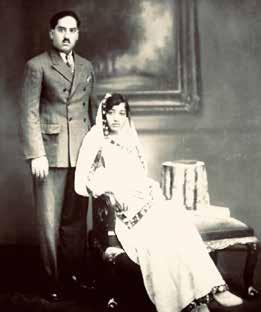
Headquarters, the High Court, City Hall and Parliament Building. According to historical records, the Freemasons incorporated their signs and symbols in some of these buildings.
Freemasonry as an organization dates back to the medieval period in Britain when stonemasons specialized in building castles and cathedrals. To monopolize their trade, these stonemasons formed a tightly knit group in which only masons with the same expertise could be admitted. With fewer cathedrals and castles being built, members of the group started appealing to other masons to join in order to bolster the dwindling membership. To admit the new members and to bind them to secrecy, they adopted the special initiation rites. Because of its secretive way of operation, the society has often been viewed as a den of devil worship, with the attack led by organized churches and conspiracy theorists.
In his article on the “Untold story of Freemasonry in Kenya,” Guy Bolding writes: “In the heart of Nairobi, on the quiet stretch of Nyerere Road, stands a building shrouded in whispers. Its colonial facade, modestly dignified, bears the weight of a century of secrecy and symbolism. Even as late as the 1930s, only a handful of lodges admitted Asians - even fewer welcomed Africans. It was then an institution that mirrored the racial exclusions of the Empire. The landscape began to change in mid 20th Century. Tanzanian businessman Sir Jayantilal Keshavlal Chande


joined the fraternity after a two year wait in 1954. In his writings in ‘Wither directing your course,’ he argues passionately for the craft’s formal foundation…”
One of those handful of lodges that admitted Asians was the Orient Lodge in Nairobi, which had been founded in 1914 especially for nonwhite Freemasons. Most of the members of this Lodge were Asian men working for the railway.
I never understood why my paternal grandfather Hiralal Chunilal Kapur chose to become a Freemason in the Orient Lodge in the 1940s, but it’s likely his job at the railway played a role. Who encouraged him to become a Freemason remains a mystery. No one in the family can tell me. I am increasingly intrigued by this part of my grandfather’s life, especially as I was only three years old when he passed on and can just barely recall his face. A good father, a hard worker, he and his wife raised seven daughters and four sons, no mean feat on his modest salary.
Hiralal Chunilal Kapur was born in Jullunder in pre-partitioned India in about 1908. His father Chunilal had been recruited to come to Kenya during the building of the Uganda Railway and Chunilal later returned to India and brought his family back to Kenya. Their first small house was in Muran’ga (formerly Fort Hall, a predominantly Kikuyu area) where Chunilal started selling small items like sweets and tobacco and other groceries.
My grandfather Hiralal took up work with
the Kenya Uganda Railway as a foreman in the colonial days in Nairobi. Hiralal and his family lived in a small stone house with a red-tiled roof at the Railway Headquarters on 139 Desai Road. My father was born in 1928. When my mother was married to my father in 1951 they lived as a joint family in the small house.
Hiralal, the patriarch of his extended family home, was called Bauji by his children and grandchildren, a term of respect meaning Father.
The first time that my mother heard about Freemasons was one Friday soon after her marriage in 1951 when there was total pandemonium in the house. Bauji was going to a Freemasons meeting at the Orient Lodge. As soon as he had returned from the office at four in the afternoon, orders were given and everyone was put to work. One ironed his shirt, another polished his special black shoes. A third child heated water for his bath, while another went to Kushal Singh Laundry to get his costume. Bauji himself prepared his special bag. In it went his apron, string, compass and other bits and pieces.
The family did not know why the meeting had to be on a Friday. Perhaps it was a convenient time as the weekend approached. Freemasonry was a time-consuming affair. The long ceremonies lasted through the evening. It was also an expensive affair
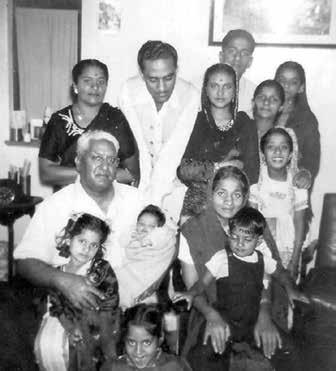
(and small drain on the family budget) as members were required to pay annual dues. None of the family members had ever viewed all the contents of Bauji’s special bag. Right from its inception, the orders of the Freemason leadership was to keep total secrecy!
Its rules prescribed a formal equality between all members, whatever their race, creed or class. The aim was moral education: building better men, just as the stonemasons of old had built cathedrals and castles. Crucially, however, all of this was to be conducted in seclusion from the outside world, and it involved learning secrets and swearing to keep them. Freemasons have long communicated using visual symbols drawn from the tools of freemasonry. The All Seeing Eye, or the Eye of Providence, while not designed by Masons, has been used by the group to represent the omniscience of God. The most well-known Mason symbol, the square and compass, depicts a builder’s square joined by a compass.
The slim black bag each member carried was an important item. In fact, members recognized each other by their bags - even before they had made the three-pointed handshake. The strange handshake that the Freemasons call a grip bound the men in more ways than one!
A Lodge meeting was a great moment and Hiralal made a lot of effort and involved the whole family in getting ready for it.
The Lodge meeting itself was an all-male affair. Women had no business meddling in the ultra-guarded, enigmatic group. Even in the family, they spoke about what little they did know of Freemasonry in hushed voices. From the expressions of others my future mum, known as Muni, understood that she had better not show too much curiosity. She had been well trained. They dared not even ask where the Masonic Lodge was located.


Hiralal remained an active member of his Lodge for many years, even if he was never appointed to the status of master. Some said it was a way for him to rub shoulders with the Sahibs. It must have given him an added feel of respectability, a sense of worth. Holding a drink in their hands, they felt as if they could share a moment of respectability with their white brethren. They swore allegiance to whichever government was ruling. In the colonial times, they swore loyalty to the crown. Some said it was a respectable way to have access to alcohol. Others said it was a bhoot khana; a

ghost house; that they were vampires, sucking blood and eating the brains of the people.
Railway Babus had been the first Asians to become Freemasons. While the Hindu Punjabis took to it without much ado, many Muslim families were suspicious of the Bible studies and the drama of oath taking - not forgetting the drama of imbibing of alcohol.
Whatever hidden rituals the Freemasons guarded, the cloak of secrecy made for a powerful recruitment tool. It was a chance to join an elite group who possessed truths based on rituals and symbols to create a bond.
Everything had to be conducted in seclusion from the outside world, and it involved learning secrets and swearing to keep them. Once the wrapping of secrecy was removed, the moral principles of the brotherhood seemed quite ordinary - To be good, to remember that death puts things in perspective. My grandfather saw in it bonding, fellowship, and sacredness. Its secrecy made it like a religion, without containing any dangerous theological ideas.

The most basic requirement - other than gender - is that one must believe in a deity. Any deity. In any Freemason Lodge, there is a religious or philosophical book prominently displayed whenever there is a meeting. In Kenya, that book is normally the Bible. The Freemasons call such texts ‘Volume of Sacred Law.’ Other than the Bible, other texts include The Holy Koran, The Siri Guru
A 1947 photo of the members of the Orient Lodge in Nairobi. This branch was opened in 1914 for non-white Freemasons.

Granth Sahib, The Holy Bhagvad Gita, or The Dhammapada.
My brother-in-law, Raji Gabriah - a strong believer in Sikhism - learnt many verses from the Bible by heart to become a Mason. I wonder if my grandfather did the same?
Cynthia Salvadori, in correspondence with me about my grandfather’s involvement in Freemasonry, wrote: “I’m not surprised that your paternal grandfather was a Freemason - it seems that almost anybody who was anybody was. And is! It’s amazing the attraction the movement has…When Aneesa Kassam found out her grandfather, Kassam Kanji, had been a Freemason, she was trying to do some research about Indian involvement.”
Kassam Kanji, a prominent bicycle dealer in Kenya, was also a leading member of Freemasonry in Kenya, having joined the group in 1925 in Nairobi. Kanji’s family were fairly recent converts from Hinduism to being Ismaili Muslims.
Many early prominent Asian businessmen in Kenya, such as Alladina Visram, were Freemasons. Kassam Kanji arrived in Mombasa from Bombay in 1906 when he was only 14. He first worked for Alladina Visram by hawking his merchandise on a bicycle in Mombasa.
When Visram died in 1916, Kanji moved to Nairobi, where he was employed by Suleiman Ahmed, a leading furniture dealer. Kanji delivered furniture to customers’ houses.
In 1923, with a small loan from his new father-in-law, he decided to start his own business in the Indian Bazaar (now Biashara Street), specialising in bicycle spare parts. His business took off well, and within a short time, he began negotiating directly with bicycle manufacturers abroad. By 1928 he had become the sole dealer of Raleigh bicycles in Kenya. He became known as the ‘Cycle King of Nairobi.’ Among his customers was Jomo Kenyatta, who later became his friend.
In the 1930s Kanji opened his second shop on Hardinge Street, now Kimathi Street. He also diversified his business to include Singer sewing machines and children’s stuff. He bought a house in Parklands which he furnished with imported furniture from Europe. Being a family man, he hired a maid from Seychelles not only to look after his children but also to teach them English. Meanwhile, with his businesses doing well, he bought a bigger house in Kilimani and acquired more properties in Nairobi and Mombasa. In 1954 he hired a British architect to construct a much bigger house facing the Ngong Hills. He also supported African nationalism.
But through it all, Kanji remained a committed Freemason. In 1952, he was one of the founders of a multiracial Freemasons Lodge in Nairobi, the first Lodge to admit people from all races.
Kanji’s daughter, Aneesa Kassam, wrote his biography in a book called A Man of Principle: the Life History an early Kenyan Indian Settler (1892 -1988). In the book she says her father’s fellow Ismailis began referring to him as a nastic (non-believer) because of his “outspoken criticism” of Ismaili practices in East Africa, especially after the provincial council considered refusing burial rites to a member who had died while owing subscription fees. His grandson posits that Kanji’s disillusionment with religion - he even stopped attending regular prayers - was partially because he was influenced by the tenets of Freemasonry, primarily demonstrating love and tolerance, performing acts of charity, and striving for the truth.

It’s not only Ismailis who felt their followers like Kanji were compromising their faith by being Freemasons. Despite its use of the Bible in some of its rituals, other oaths and its secrecy has led many Christian churches to condemn the Freemasons.
In the 1990s the Kenya government set up the Devil Worship Commission. In their report they recommended the Freemasons, and others on the list, be investigated. All of Kenya’s problems, it seemed, could be fixed if such organizations were closed down. Freemasons in Kenya launched a spirited PR campaign. They’ve allowed journalists into their lodges and have a public website which lists their charity works. At the height of the 1990s hysteria, the Freemasons took the Commission to their Nyerere Road Lodge on a guided tour and showed them a video tape on a Masonic function in England presided over by the Duke of Kent. Their point was that they “are not a secret society, but rather a society with secrets.”
However, there’s some truth that the Masonic ideals of brotherhood have hurt Kenya’s fight against corruption. One was the case of Kenya High Court Judge Justice A B Shah, a judge and a Freemason. Freemasons are bound by an oath to assist each other. In 2003 Justice A B Shah was suspended after it was discovered that he helped a fellow Freemason draft a replying affidavit in the case of Rai v Rai where Shah was sitting as the judge.
In the early 2000s some churches took out ads in the daily newspapers against the Freemasons. In 2004 there was a public split in the PCEA’s main church St Andrews, over symbols in the building that matched those of the Freemasons. The anti-Masonic side had already removed stained glass and metal grills from the building. The church was founded by Scottish missionaries. Freemasonry in Scotland is thought to be the oldest in the world.
I’m still not sure why my grandfather became a Freemason. Why was he willing to join a group that insists on its members believing in a supreme being and on every member undergoing a ritual of admission? Perhaps he was drawn by the way Freemasonry insists on a sense of brotherhood among members. Or its requirement that its members adhere to morality, charity and obedience to the law of the land. But I cannot even imagine him and other strong Hindus reciting verses from the Bible!

by Ken de P Beaton - Originally published in the East Africa Standard
The Nairobi National Park began in 1946. Ken de P Beaton, the first warden, published a weekly diary in the East African Standard newspaper in 1949, later published as two books. Ken’s son Ron recently shared those books with Old Africa. His diary entries give a flavour of what the park was like in its early days.
5 March 1949 Lion have been more difficult to find during the last week. Owing to the dry weather, the waterholes on the plains, and in the gulleys have dried up. The game and lion are now dependent on the two permanent streams in the park, the Athi river and the stream in the Mokoyeti gorge. Because of the scarcity of water most of the game is now concentrated in the Athi basin and to the south of the river.
A large light-maned lion, seven lioness and nine cubs are living in the rough stony valleys to the south of White Grass ridge.
A fine black-maned lion with six lioness and four older cubs are in the Athi basin. They lie up by day on the high ground to the east of No. 3 Ranger Post.
Other odd individuals have been seen south of the Athi river and in the Mbagathi valley above Kingfisher gorge. All the signs point to rain within the next week or two. When it comes, the game will spread over the whole area again and the lion will follow.
Four new picnic places, with tracks to them, have been made between Athi township and the top hippo pool. Starting from the south these have been named Mabogo Pool, Long Pool, Rhino Drift, and Vulture’s Roost. They have all been sign-posted.
I hope visitors using these picnic places will leave no litter behind. There is nothing more unpleasant for the people who follow than to find the place littered with paper, eggshells, and banana skins.

Every precaution must be taken also against fire. The whole country is as dry as tinder and a carelessly-discarded cigarette-end or unextinguished fire may set the whole park alight.
A jet-black genet cat with yellow spots was seen, by an assistant warden, near Lone Tree,
a complete reversal of the usual markings. Melanism (excess of dark colouring matter in the skin, hair, etc.) occurs in all the cat tribes, but usually the animal is completely black with the spots seen faintly in a darker shade. I have never heard of a reversal of markings, as in this genet.
In the Lion Valley I saw a pair of the true wild cat, hunting along the edge of a bush at dusk. These wild cat look like large, husky, tabby cats with big heads. They are vicious brutes, powerfully built, and will fight a dog when at bay.
One morning I noticed that the herds of game - zebra, impala, Grant and Thomson’s gazelle - on the Somali ridge were interested about something. Suspecting the presence of lion or cheetah, I investigated. I found the excitement was caused by a pair of wart-hog. The game were snorting, jumping, and running out of the way of the pig as they trotted along. I have noticed this fear of pig before, and I cannot understand it. I think they must be mistaken for lion.
There are three species of wild pig in Kenya—the giant forest hog, the bush pig and the wart hog. Only the two latter, however, are present in the Nairobi National Park.
I found three lion eating a bush pig close to my camp a few months ago but it was an immature youngster. The bush pig vary in colour from reddish-brown to black and usually have a white blaze on the front of the face. They live in the forest or thick bush and are entirely nocturnal by habit.
The wart hog, which often carries magnificent tusks in the boar, is the pig that is most often seen by visitors to the park. When alarmed they will grunt and trot away with their tails held stiffly erect in the air. They do not dig holes themselves, but they use old ant-bear holes which they enlarge and use as burrows.
On entering a hole they usually turn round and descend stern first. They do this for protection, for if followed by an enemy, the sharp tusks are then ready in a defensive position. They can be bolted by stamping on the ground above; when they emerge they come with a rush so stand clear!

A Sudanese Folk Tale - Retold by Shel Arensen
In Old Africa wisdom from the elders was often passed on to the next generation through stories told around the fire in the evenings. There is a wealth of oral tradition and this new column will collect the best of these stories. To launch this new column, here is one of the editor’s favourite stories.
Antelope tore past Warthog who grunted and jerked up off his knees where he’d been rooting up his food. “Fat old Warthog,” Antelope taunted as he whizzed past. “I can run like the wind!” He stretched out his long, slender legs and churned dust as he ran.
“I am the fastest,” Antelope boasted as the animals gathered in the cool of the evening by the river. “No one can beat me in a race.”
Frog’s throat pumped in and out as he listened to Antelope’s prideful boasting. “I can run faster than you,” Frog announced. “I challenge you to a race tomorrow.”
Antelope came over to where Frog crouched in a patch of mud by the Nile River. “You lumpy old mudhopper. You could never beat me!” Antelope said.
Frog squinted his big round eyes into the most fearsome ugly face. “We’ll meet here tomorrow at the second hour after the sun rises. We will race along the riverbank. The last one left standing will be the winner.”
Antelope snorted, “You don’t have a chance!” Then he pranced away to practice his sprints.
That night Frog called a meeting of all the frogs in that part of the Nile River. The warm night air echoed with rolling sounds of frogs murmuring as they waited for the meeting to start. “Cleet! Cleet!” the younger frogs with yet-untested throat bags squeaked, while the older frogs burbled, “Burbet! Burbet!”
“I need your help to win my race against Antelope,” Frog said when they had all gathered. “Here’s my plan.”

The next day Frog and Antelope met by the river and started to race. Antelope leaped ahead while Frog hopped froggishly through the mud. Antelope looked back at Frog and
Text © Copyright Shel Arensen
shouted, “Jump into the river you old mudface. You can never win.”
Frog hollered back, “We’ll see who’s still running at the end.”
Antelope dashed along the river for about five minutes until he felt very tired.
He stopped to rest, knowing Frog lagged far behind. But as he stopped, he heard a plip, plop, burbet, burbet, slip, slop next to the river. He looked and saw Frog hopping through the mud. “I’m ahead of you, Antelope,” the frog said. “Why are you resting?”
“How did you catch up so fast, you mudplopper?” Antelope asked, jumping up and racing away without waiting for an answer.
He ran for ten minutes this time before he stopped, gasping for breath by the river. But as soon as Antelope stopped, he heard a plip, plop, burbet, burbet, slip, slop coming from the river. He saw Frog who asked in a raspy, croaking voice, “Slowing down already?”
“You slimy bag of river muck. How...?” Antelope began to ask, but instead he started running.
Every time Antelope stopped to rest he heard a plip, plop, burbet, burbet, slip, slop and saw Frog hopping by the river goading him on.
Finally, Antelope could run no further. He sank into the grass gasping for breath. “I’ve had enough, you muddy maggot-eater,” he said. “You’re the winner.”


That night, the sound of plip, plop, burbet, burbet, slip, slop filled the mosquito-thick night air as the frogs danced by the Nile River. “I want to thank all of you,” Frog said, “for lining up along the banks of the Nile River so that whenever Antelope stopped, he saw one of you hopping and thought I had caught up.”
The others burbled with laughter. “You should have seen the look on Antelope’s face when he saw me mudhopping,” one frog said. “He looked like he would croak!”
“I couldn’t believe he didn’t notice how different we all looked,” another frog commented. “But then again, all antelopes look the same to me.”
Frog smiled and said, “Being wise is more important than being fast. But having family to help in a problem is the best thing of all!”
The dance continued all night. Plip, plop, burbet, burbet, slip, slop.
This story has been published as an illustrated children’s book called Race on the Nile by Old Africa books and is available for Ksh. 200/plus shipping. Order directly from Old Africa in Naivasha. Contact: blake@oldfricamagazine. com for ordering details.






1. Which Masonic Lodge in Nairobi did Hiralal Kapur join?
2. Which lake steamer did Mhorag Candy’s family board to cross Lake Albert?
Old Africa reader Derek Rundgren from Watamu is the winner of our History Quiz 84, which appeared in Old Africa issue 120 (August-September 2025). By the contest deadline we received 26 entries. All 26 names were put into the Old Africa pith helmet and swirled around. Derek’s name was chosen out of the hat and he wins two nights for two at Satao Camp. If you didn’t win this time, have a go at Quiz 85, which follows below. This month’s History Quiz Contest is sponsored once again by Satao Camp and Old Africa is thankful for their support and willingness to sponsor this page.
Win two nights for two at Satao Camp!
How closely did you read this issue of Old Africa? Answer the ten questions in our history quiz below and you have a chance to win a vacation at Satao Camp. All the answers are found in this issue of Old Africa. You don’t have to cut up your magazine. Just write the correct answers on a separate sheet of paper and send your entry along with your name and address and phone number to: History Quiz, Old Africa, PO Box 2338, Naivasha, Kenya 20117. Or you can email your list of answers to editorial@oldafricamagazine.com The winner will be randomly chosen from all the correct entries received by the contest deadline, which is 4th November 2025.
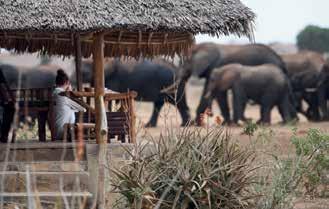
3. What was the name of the bus company that had one of their buses bombed in Nairobi in 1975?
4. What was name of Errol Trzebinski’s book about the romance between Karen Blixen and Denys Finch Hatton?
5. Who was the first African principal of Egerton College of Agriculture?
6. WJ Dawson came to Kenya from what country?
7. What did Dorothy Wynn call the lion that ate a man near Mombasa in 1899?
8. What kind of dog was Taji?
9. What company prepared the railway cutting in Limuru in 1948?
10. Who formed a club of former Africa-based employees of Esso and produced a yearly newsletter?


Wake up to the sight of elephants at our waterhole, unwind in spacious tents, and immerse yourself in the beauty of Tsavo East National Park. Located in one of Kenya’s largest and most iconic parks, Satao Camp offers:
Unbeatable Wildlife Viewing: Spot elephants, impala, lions, and more right from your veranda or observe from the camp watchtower.
Authentic Tented Comfort: Relax in beautifully designed en-suite tents that blend comfort with the charm of the wild.


Stunning Landscapes: Explore vast savannahs with iconic amber sands and the untouched beauty of Tsavo East.
Book your adventure today



Mhorag Candy from the UK is the winner of our Historic Photo Contest this issue with two images of Alliance High School students taken in the late 1920s or early 1930s. She wins a book prize from Old Africa
The first photo shows James Smith, one of the teachers on the staff of The Alliance High School, Kikuyu, with a group of Alliance students on the peak of Mount Longonot in 1928. Smith came to Kenya in the late 1920s to join the staff at Alliance High School and retired some 40 years later as Deputy Headmaster. He was awarded the MBE for services to scouting and education in Kenya. Mhorag Candy is Smith’s niece.
The second photo shows a tug-of-war at a sports day at Alliance High School, possibly taken in the late 1920s or early 1930s. Both photos came from an old photo album.
Old family albums hold many treasures. Enter one of your photos in our Historic Photo Contest and win a free book from Old Africa! And have the pleasure of sharing your photo with Old Africa readers around the world.

If your photo is chosen as a winner in our Historic Photo Contest, you will win a free book from Old Africa. The best way to send a photo to Old Africa is to have it scanned as a jpeg file of 300 dpi resolution and email it to us at: editorial@oldafricamagazine.com Note on your email that you want this photo entered in our Historic Photo Contest. If you don’t have access to a scanner or to email, you can mail your photo or photos to us at: Old Africa, PO Box 2338, Naivasha, Kenya 20117.



This cross sits near the peak of a mountain in Kenya’s Rift Valley. It’s not very old, but an Old Africa reader found it leaning badly. He asked the appropriate official for permission to strengthen the base before the cross fell over. The official said he didn’t even know the cross had been placed there. Permission was eventually secured and the cross now stands firm. Do you know who built this cross and where it’s located? And do you know the meaning of the inscription on the cross? The words also appear on a chapel not too far away from this mountain. You can win a Ksh 3000/- gift certificate from Text Book Centre by identifying the location of this cross. If you know where this cross is and who put it there and have any information about the inscription, or if you have any personal connection to this mystery location, send in your answer to Old Africa for a chance to win our History Mystery Contest.
Contest Deadline: For this prize we have to receive your entry by 4 November 2025.
Send your answer to this History Mystery Contest along with any information, history, memories or stories about this cross to: History Mystery Contest, Old Africa Magazine, PO Box 2338, Naivasha, Kenya 20117. Or email your answer to: editorial@oldafricamagazine.com. Editors will choose the winning entry. The answer to our mystery contest will be announced in our next issue along with the name of the winner and his or her story about our mystery location. Family members of Old Africa staff members are ineligible to enter this contest.


Our History Mystery Contest is sponsored by Text Book Centre.
…much more than a Bookshop!

John Saul from France wins our History Mystery Contest from issue 120. He identified our cement and rock relic on the Kenya-Ethiopian border, which dates back to the early days of World War II. He wrote: “That’s a pillbox like those of the Atlantic Wall.” He wasn’t sure the location and wondered, “Did the Italians fear an amphibious landing of Kenyan submariners from Lake Rudolf?”

Our photo indeed shows a ‘pillbox’ or a military fortification designed to hold artillery and provide some protection for the operator and the gun. It’s actually located in Moyale on the border with Ethiopia and was built in about 1939 when the British forces in Kenya fortified the border town in anticipation of conflict with Mussolini’s Italian army, which had taken over Abyssinia – later to be known as Ethiopia. The photo was taken by Eric Goss and the cement pillbox is located in the grounds of the Moyale Subcounty Water Office! Thanks also to Old Africa reader and contributor Rupert Watson who submitted the photo as a possible location for our History Mystery Contest. And congratulations to John Saul. Since he doesn’t live in Kenya, his prize will be a book from Old Africa.


Several articles in this issue mention travelling on the railway in its early days – one group going on a hunting safari before the railway line had even reached Nairobi. And another article tells of a family’s journey from Nairobi to Cairo by rail, ships in Uganda waterways and steamers on the Nile. So we dug through our photo archives for this selection of railway and steamship photos.
1. The SS Robert Coryndon, one of the ships in Uganda operated by the railways. The article called “Nile Journey” in this issue tells how Mhorag Candy and her family rode aboard this ship on Lake Albert in 1946. Her mother says the family rode a bus from Masindi to the port of Butiaba on Lake Albert where they boarded the SS Robert Coryndon. This photo shows the ship in the Butiaba port with the railway bus parked nearby. Our photo was taken some time after 1948 when the East African Railways & Harbours was formed.
2. When Dorothy Wynn and her brother Willie, Baron of Newborough, travelled on the train from Mombasa to Makindu in 1899 (see the story “Lions and Rail” in this magazine) the rail lines would have crossed over some of the gullies on trestle bridges like the one pictured here from the very early days of building the railway.
3. A more modern bridge that would have replaced an old trestle bridge, spanning a river on the rail line. The EAR on the engine means this photo was taken prior to 1948. After that the Tanganyika Uganda and Kenya rail lines and ports were joined together in the East African Railways & Harbours (EAR&H).

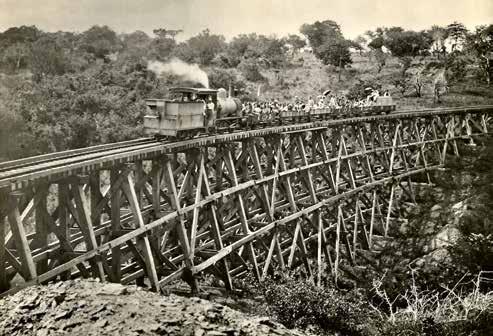

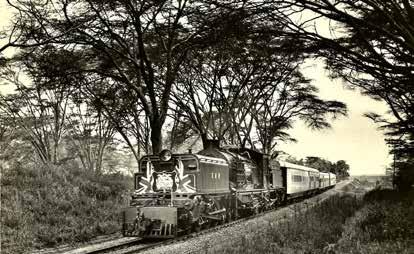
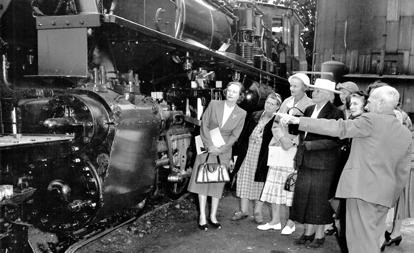

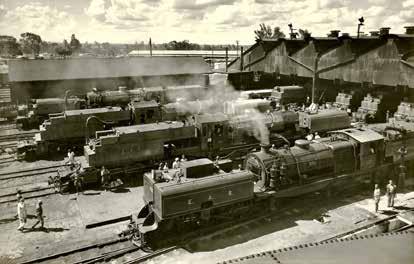
4. A train passes through a belt of yellow fever trees as it approaches Naivasha Railway Station. The Union Jack flags and crest on the front of the engine might have signified that the train carried passengers from the royal family.
5. A group of visitors are shown an engine at the Nairobi Railway station some time in the 1950s. It’s uncertain if the ladies are a delegation from the UK, or whether it is a local group from the East Africa Women’s League on an outing.
6. A train runs through a railway cutting constructed in early 1948 in Limuru by the Mowlem Construction Company.
7. Engines crowd the railway yard in the Nairobi Railway Station in the late 1940s.
By Emilia Ilieva and Reuben Matheka Reviewed by Old Africa
Emilia Ilieva, a Professor of Literature at Egerton University, and Reuben Matheka, an Associate Professor of History at the same school, have teamed up to write a very readable history of Egerton University. They take time in the first few chapters to look at the colonial background of the school, which was created for white students only in 1939 to provide practical agricultural-based education to secondary school leavers, with shorter courses intended for incoming white settler farmers, or their managers. The aim of the school was to improve agriculture, though the authors are quick to point out that at the start it meant white-owned farms.
There is a well-balanced chapter on Lord Egerton, the single and eccentric British nobleman, who balanced managing his large Kenyan farms with his estates in Britain, while still going on many collecting safaris. The colonial government prevailed on him to donate the land in Njoro for the school, which opened as the Egerton Farm School on the eve of World War II. This rather hindered the growth of the school through the 1940s, but in 1949 the school accepted its inaugural Diploma Class as the school became known as Egerton Agricultural College.
With a multiracial student population, the school began to Africanize the staff and teaching positions as well, with Dr William O Omamo stepping up as the first African Principal in 1966.
The book charts how the school added new educational programmes, the various research projects the school has participated in and the many partnerships it has with overseas schools. It also looks at the rocky road the college followed in becoming Kenya’s fourth public university in 1987. Later chapters examine the crisis in Kenya’s higher education system and the tumultuous days as student activism disrupted campuses across the country while Kenya eased its way into multiparty democracy in the 1990s.
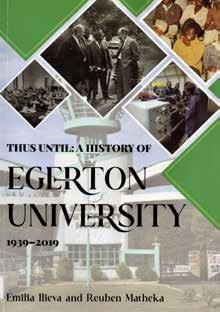
As would be expected in a book by two academics, there are a full 90 pages of end notes, as well as a 22-page bibliography, showing how carefully this book has been researched. The text ends in 2019 when Egerton celebrated its 80th anniversary and the epilogue, written in 2023, gives a nod to the University’s future. The book clearly shows that throughout its history Egerton has led the way in providing top level agricultural education, which has boosted Kenya’s agricultural output from colonial days to the present. As Ilieva states in Chapter Eight: “Egerton College consistently infused practicals in the curricula of its programmes.
‘Learning by doing’ was one aspect of the colonial legacy which it was determined to retain.”
As the 1950s came to a close, it was clear Britain would soon grant independence to Kenya and Egerton was opened to students of all races in late 1960, a move that had required excluding Sir Ferdinand CavendishBentinck from Egerton’s Governing Board, because he still felt the school should be for white students only. The book states: “The first multiracial diploma class in 1961 had a total of 47 students, 38 of whom were from Kenya (23 Africans, 13 Asians and 2 Europeans); 7 from Tanganyika (5 Africans and 2 Europeans); 1 from Uganda (African), and 1 from Somaliland (European).”


Thus Until: A History of Egerton University 1939-2019, published by East African Educational Publishers, Nairobi, 2024. Paperback, 578 pages. The book retails in Nairobi for Ksh. 3,500/- and is available in Nairobi from Prestige Bookshop and branches of the Textbook Centre and other major bookshops in Kenya. Readers outside Kenya can order the book from the African Books Collective for UK £50 at the following link https://africanbookscollective.com/books/ thus-until/ The book should also be available soon from Amazon.
A biography by his brother Rev J B Thomson
Published by Sampson Low, Marston and Company, London 1896.
Reviewed by Isabel Nanton
Retired from the Mombasa Club Library in 1953, this book has sat on our Africana bookshelf in Kilifi, a classic in the real sense and of special interest to me since I grew up not far from what was then Thomson’s Falls –‘discovered’ by the explorer on his legendary trip into Masailand at a time when even the Portuguese and Arab slavers would not venture there on their raids for slaves and ivory.
Joseph Thomson’s reputation also stands as “Chi va piano va sano; chi va sano va lontano.” (He who goes gently, goes safely; he who goes safely, goes far.) He was unlike explorers such as Henry Stanley, who were quick to use force of arms on their African explorations.
The youngest of a family of five Scottish sons, Joseph was born on St Valentine’s day in 1858, from early days “overflowing with a love of fun” and “devoted to goodness in all its forms,” always alive to the ludicrous even in the most trying situations. Drawing on letters sent home and to friends, Thomson’s brother wrote the book soon after Joseph died in his arms, aged 37 after five expeditions on the African continent, his health finally broken by a kidney disease he likely contracted in the High Atlas Mountains of Morocco.
not only congratulated them and sent salaams, but also dispensed some money.
As the author comments: “African travelling, even in the most favourable circumstances, is no rose-water work.” And Thomson was up for the task, “relaxing” back in Scotland in 1882 after attending Darwin’s funeral, walking 55 miles a day for recreation, followed by a dance afterwards.
Impressed by the patient diplomacy of this young explorer, the Royal Geographic Society then tasked him with taking a caravan into Masailand, following soon after the German explorer Fischer’s party. who had fought and drawn blood during their exploration.

Pitched at the tender age of 21 into the leadership of his first Geographic expedition in 1878 when its leader Keith Johnston passed into “the last silence,” the author points out that his brother was up to the task, being a Scotsman, the remit being an exploration of the region between Dar es Salaam and Lake Nyasa and so with a spirit of self control and tactful forbearance Thomson met the challenges of disease, danger, desertion and stealing with a wise humouring of his men. What interested this reader was the logistics of putting a caravan of porters together, the territory they covered and how at the end of the expedition the Sultan


I have read Thomson’s best seller Through Masailand (also translated into French and German) and realized that the Masai found him unusual especially when he started foaming at the mouth with the use of Eno’s salts. He claimed to be a great “lybon” come to make spells for Masai cattle being decimated by disease. He crossed Masai land even though his abilities did not seem effective. One Masai moran nearly wrenched off Thomson’s nose, having got the impression from a trick the explorer played with a couple of false teeth, that “he was made to come to pieces if need be.” The caravan was in all 140 strong, some 80 of the number carrying guns, initially swinging by the southern and western slopes of Mt Kilimanjaro, later seeing Mt Kenia, the Aberdares, Donyo Longonot and El-Meteita. He passed over the western slopes of the Aberdare Range, where he first saw the waterfalls that carried his name. He always had to stay alert with the Masai on this trek, until they reached Lake Baringo where he found the Njemps people soothing “like a glimpse of Paradise.”
Energy and tact were Thomson’s strengths and he declaimed against the commercialism of African exploration. On his next safari, working as an agent of a trading company on the Royal Niger Company’s Expedition in 1885 to West Africa, he found the west so different to East Africa. He felt for the local people who had not in his opinion been left to their own free will, instead exposed to “the worst vices and diseases of Europe,” which entailed a
“desire for gin, tobacco and gunpowder, wants aroused by a century of trade and of contact with Europeans.” He felt a deep “shame and moral indignation” at the “ravages of the gin traffic. On this secret mission to thwart German commercial interests, he was weakened by a terrible dysentery, that scourge of African explorers. He still met with people like the important sovereign, the Umum of Sokoto, and negotiated many treaties, all written in Arabic.
On his Morocco Expedition in 1888 he tramped in the Atlas Mountains, watching snake-charming events and, disguised in Moorish dress, went into mosques and hummums (sic) until a fracas ensued with folk shouting “stone the Christian dog.” There is a flat tone to this area of exploration of Africa “my adopted continent,” where elsewhere he had dined on rhino and “sucked the marrow bones of elephants.”
With the end of his life in sight, he headed for Cape Town to fill a blank space on the map, conferring in Kimberley with Cecil Rhodes, exploring diamond mines, his skeletal frame carried into Blantyre in a hammock “in a grim race with death” as daily attacks of fever wracked his body. Still, he revels in the singing of birds and while now a “broken-down African traveller” who had spent 15 of his best years in Africa, his critical thinking faculties were unimpaired, concluding that the “building of a railway would be the most killing blow to the slave trade...doing away with the need for porters (too).”
Several eminent men wrote appreciations of Joseph Thomson at the end of his brother’s book, including one who lauded his “unique geographical instinct…and powers of observation and of topographic discernment that...amounted almost to genius.” JM Barrie,
of Peter Pan fame, wrote of Thomson that he “would have gone to the stake rather than tell a lie” while “Thomson never countenanced the belief that tropical Africa could be made the permanent home of Europeans.”
White ants have in places attacked my copy of Joseph Thomson’s explorations, but they have not succeeded in obliterating what he achieved. A man after my botanical heart, he presented three considerable collections of dried plants to Kew, as well as collecting shells from Lake Tanganyika and Lake Nyasa.





Stepping Out - The Life and Times of a Mara Cowboy by Tony Church
Stepping Out captures the amazing experiences of Tony Church, who pioneered horse riding safaris in Kenya. This memoir starts with Tony’s youth growing upon the slopes of Mt Kenya and learning to fish for trout from his missionary father, Tony writes clearly about his time in boarding school and riding his horse among herds of game animals on the Athi Plains. His love of Kenya led him to start his own safari company to share his insider knowledge with others. The book is filled with great adventures, like saving a client from a crocodile’s mouth and having lions attack his horses. The book also shows the ups and downs of operating a business as Tony hustles for overseas clients, negotiates with local Maasai for passageway for his horses, sets up good conservation practices and deals with dubious ethical practices and more. Overall, the book is a tribute to the beauty of Kenya – the land, its people and animals – told by someone who could never live anywhere else.
Available on Amazon stores worldwide
To get your copy in Kenya, email susan@samawati.co.ke
by Judy Aldrick
Errol Trzebinski, wellknown Kenyan author, died on 12 July 2025 aged 89. Four remarkable books: Silence Will Speak, 1977; The Kenya Pioneers, 1985; The Lives of Beryl Markham, 1993; and The Life and Death of Lord Erroll, 2000; make up the legacy by which she will be remembered.
In the 1980s as a young and aspiring author, I looked up to Errol with awe and fascination. She lived, like me, in Mombasa, and I would often see her out and about and hope that some of her star dust would sprinkle down to me.
Errol made her name with her first book Silence Will Speak, which told the tragic love story of Karen Blixen and Denys Finch Hatton. She always said that the inspiration came from a silver hip flask she spotted in a Nairobi auction house, which was inscribed with his name and had been given to him by Karen as a present. This confirmed her hunch that they had been lovers and many years later she decided to write their story.
Her timing was good as Kenyan tourism was on the rise and her book coincided with new interest in ‘The Happy Valley Set’ a small group of scandalous aristocratic settlers who lived in the White Highlands of Kenya in the pre-war years. The secret lovers Finch Hatton and Karen Blixen were part of that notorious group. Then came James Fox’s book
White Mischief published in 1982, which investigated the unsolved murder of Joss, Lord Erroll, and was filled with more revelations about the decadent lifestyles of certain wealthy white settlers.
Errol’s book Silence will Speak was chosen as the source for the love story in the Oscar-winning 1985 film Out of Africa. This was shot in Kenya and Errol gave advice and helped set the scene. Starring Robert Redford and Meryl Streep as Finch Hatton and Karen Blixen, the movie won seven Academy Awards.
The success of this film propelled Errol into the limelight. Her books received rapturous reviews and national newspapers and journalists came seeking exclusive interviews. However, fame often comes with a price and in later life Errol experienced depression and much sadness.

resulted in two children, Tonio born in 1960 and Gabriela in 1962. They made their life together in Nairobi, with Errol acting as stylish hostess and homemaker. In her spare time, she started writing a cookery column for The Nairobi Times and five years later came cookery books.


Errol was born in Gloucester, UK and educated at Wimborne Convent in Dorset. Her father worked for British Airways, BOAC as it was then. After her parents separated, her mother moved to Nairobi. At the age of 16 Errol left school and followed her mother to Kenya. In Kenya she started to train as a nurse, but before finishing met and married her first husband. They had a son, Bruce, but divorced soon after.
A few years later she met ‘Sbish’ Sbigniew Trzebinski, an up and coming architect, originally from Poland. Their marriage lasted a lifetime and
Sbish’s work for the tourist industry on hotel projects brought him down to the Coast and in the 1970s the family moved to house just outside Mombasa at Shanzu. It was while living here that Errol began writing the books, for which she is best known. Her research work was thorough and meticulous. I remember visiting her to find information and being impressed by the extensive filing units and card indexes filled with the research material she had accumulated. Later when I came to write my book on Northrup Macmillan, I was grateful for her permission to use data she had collected for her book The Kenya
Pioneers. By that stage she had given her archives to the Bodleian Library, Oxford and I remember going through various cardboard boxes of her material at Rhodes House.
Her book on Beryl Markham uncovered a possible royal scandal, but it was her final book the Life and Death of Lord Erroll ; the Truth Behind the Happy Valley Murder, that really hit the headlines. All British Newspapers carried reports. The Independent on Sunday featured a piece headed “Murder, Drugs and Adultery in Happy Valley.” While The Daily Mail went to town with a whole series of articles featuring the book: - “Was Lord Erroll the victim of a plot by the British Secret Service?” “Now a sensational new book claims that the Earl a fascist sympathiser was shot on the orders of his own government.” In this book, published in 2000, Errol claimed that the murder, previously assumed to be a crime of passion with the husband shooting the man who was having affair with his wife, was in fact a planned government assassination. This was shocking, but not everyone was convinced. Some readers thought the author had strayed into conspiracy theory territory and were unimpressed. There was still no definite proof as the evidence depended on hearsay. However, the book sold well and added a new layer of possible motives behind the unsolved mystery of who killed Lord Erroll.

This was to be her last book. Her children were grown up - both Tonio and Gabriela were talented artists
while Bruce operated dhows along the Kenya Coast. Then a year later in 2001 her life fell apart when her younger son Tonio was found murdered by his car in the outskirts of Nairobi not far from where Lord Erroll had been shot in 1941.
This was a dark period for Errol as she retreated into herself away from the public eye. In 2005 her beloved Sbish died, another body blow.
She now spent most of her time in Lamu, where the family owned a house in the old part of town behind the fort. I used to visit Cynthia

was

as
source for the love story between Karen Blixen and Denys Finch Hatton in the Oscar-winning 1985 film Out of Africa.
Salvadori at this period, who for health reasons had also retired to Lamu. Cynthia told me how she, Errol and Roland Minor used to meet for regular coffee and gossip sessions, when they discussed ideas for new projects. Cynthia was planning a Lamu scrapbook with illustrations by Joni Waite and short contributions from local writers, Errol included. Errol was working on an idea for a novel, a ‘who
dunnit’ set in Lamu, while Roland had begun to write his short history of Lamu. Only Roland’s history finally came to fruition (Lamu: A Brief History published by Old Africa.)
Errol continued to write the occasional article and work on new editions of her books, which were still selling well. In 2012 she contributed an Erroll murder exclusive to Old Africa magazine issue 42. Her article was entitled “The Last Word” and doubled down on her belief that Joss Erroll had been killed by government operatives for political reasons, not a jealous husband.
Her health was deteriorating and in 2019 she suffered a serious fall which left her bedridden. She was looked after by her daughter Gabriela. She continued to agonise over Tonio’s death, for which she somehow felt responsible and was frustrated by the Kenya Government’s failure in solving the case or bringing the perpetrators to justice. In 2023 her remaining son Bruce died after a long illness.
Errol Trzebinski’s life was long and productive, full of highs and lows. She achieved fame and suffered tragedy. She was the most consequential female writer of her generation, who chronicled the settler age in Kenya and dared to dig deep and expose hidden secrets of the past. She will be sadly missed.
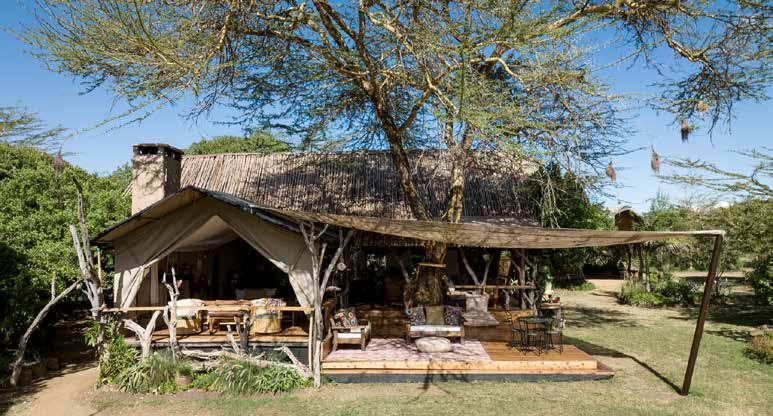

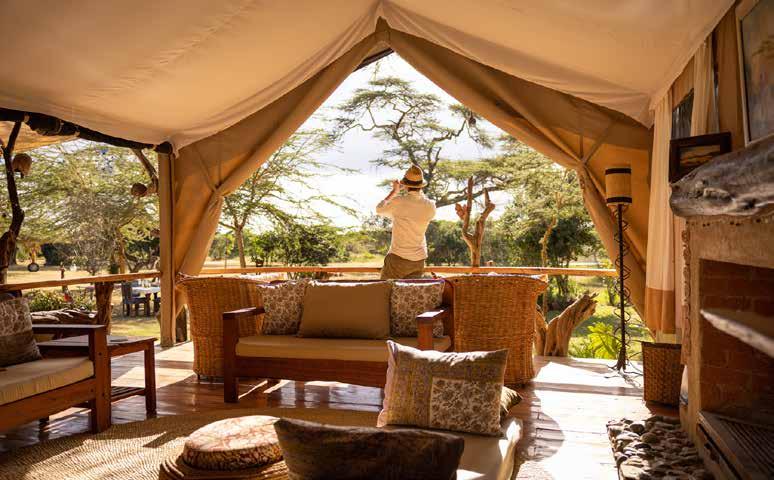


We hope you enjoyed this edition of Old Africa. Please consider a donation to help us keep the stories coming.
www.oldafricamagazine.com/donate


